#1941 my beloved you will always be famous
Explore tagged Tumblr posts
Text
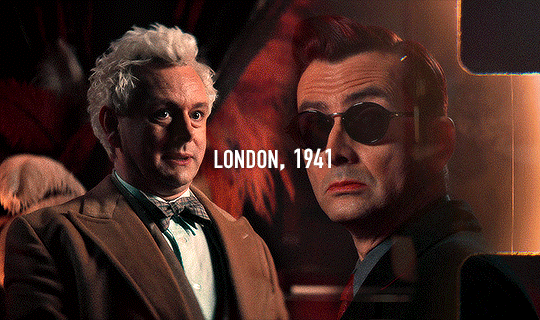
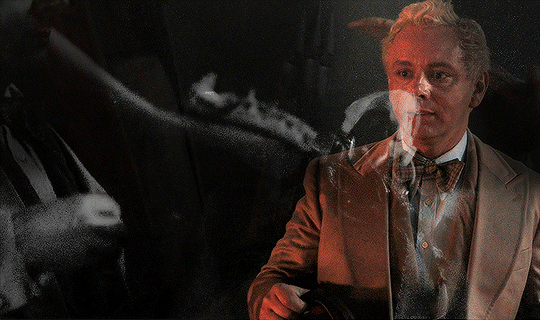
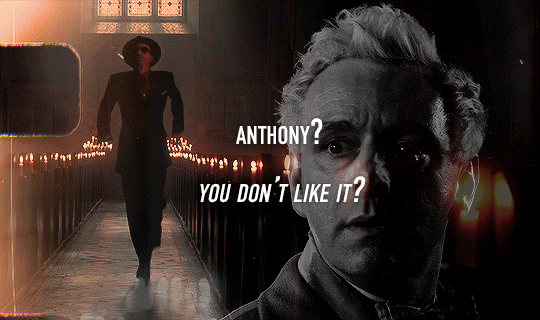
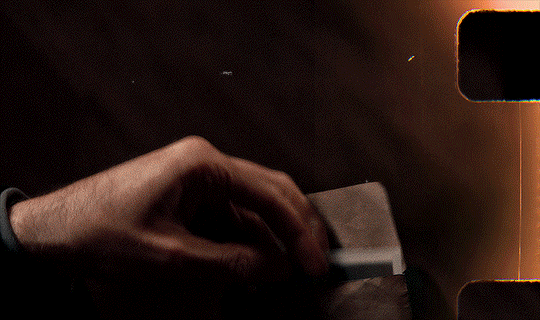
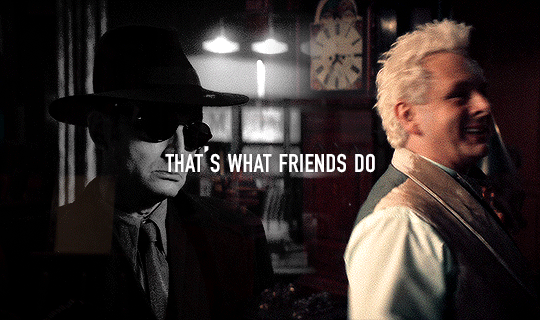
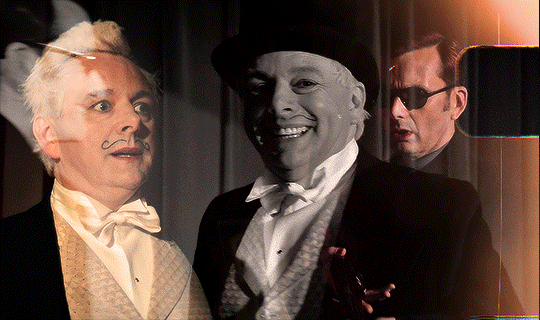
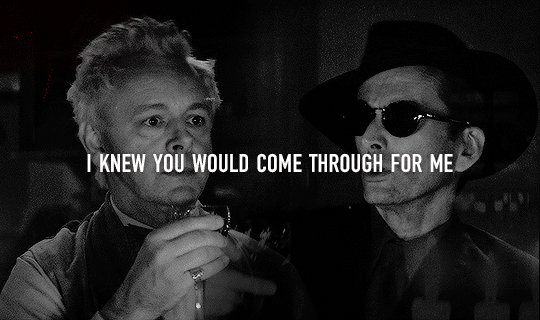
1941.
#good omens#goodomensedit#goodomensgifs#dailygoodomens#goodomenssource#usergif#usereena#usersugar#usermullet#userisaiah#saryasy#stuck at home with bronchitis so decided to fuck around and try some new stuff with photoshop#1941 my beloved you will always be famous#i live in the 1941 flashback and it lives in me#myedits#gif#flashing gif#tw flashing
1K notes
·
View notes
Note
May I ask a possibly stupid question? How is Sanderson Hawkins still so young? I was doing reaserch for my paper on The Sandman and the timeline was really distracting for me, since Sanderson is a relative of his. He should be a lot older than he is, shouldn't he? There was a period of time wherein he seemed to fall off the face of the Earth, so maybe time travel was involved?
Please, let me know if you have the answer to this!
Ok so, you're not wrong in that Sanderson "Sandy" Hawkins is much older than he looks.
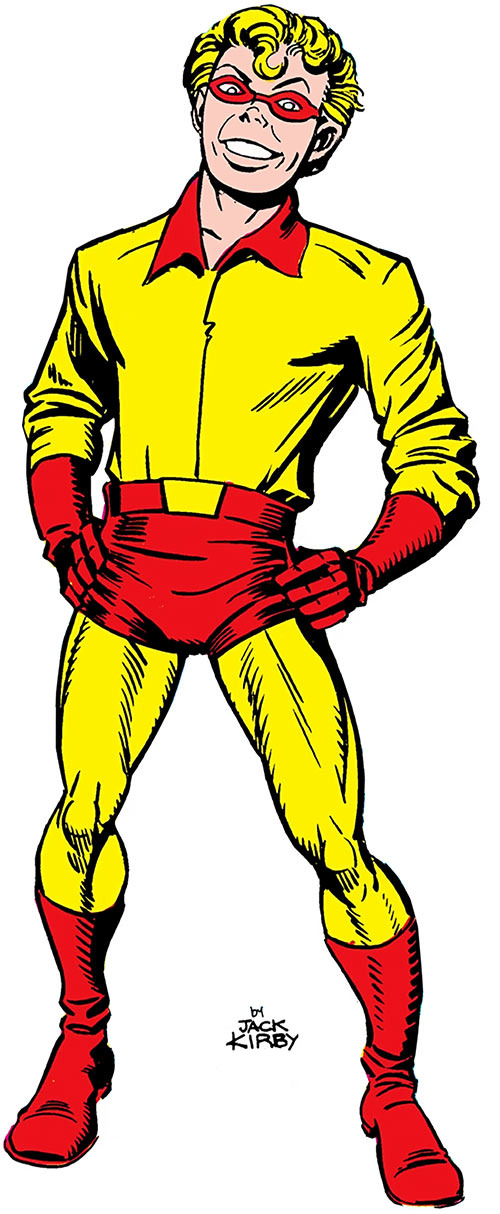
(A portrait of Sandy the Golden Boy drawn by famous pop artist Jack Kirby) Sanderson Hawkins isn't actually related to the original Sandman, Wesley Dodds by blood. He was the nephew of Dodds' lifelong companion, famous crime novelist Dian Belmont. (Who is famous enough on her own that some people freak out when I tell them that little factoid). Despite Dodds and Belmont having a lifelong romantic partnership and cohabitating for most of their adult lives, the two never married.
"Sandy" discovered Dodds' identity when he stowed away in the older man's attic after being taken to visit by Dian, seeing Dodds being approached by the Justice Society to confer on a case. Thus discovering Dodds' identity, Sandy became his partner in crime fighting, Hawkins' sunny disposition inspiring the Sandman's costume change to be more of an inviting and trusted public figure.
Sandy served with distinction as an associate member of the Justice Society and a member of the Young All-Stars where he served as pseudo leader due to his higher experience as a kid superhero.
Sanderson was 13 when he and Dodds originally met in the latter days of 1941. Meaning he was born in December of 1928.
Which would make THIS man 96.

(Former official portrait of Hawkins in his persona as "Sand")
Maintain professional detachment, maintain professional detachment, MAINTAIN PROFESSIONAL-!
*ahem* Anyway.
Like you said, the trick is in the time very soon before the forced disbandment of the JSA that Sandy the Golden Boy seemed to vanish from the face of the Earth.
Caught in the blast of an experimental silicide gun and bombarded with radioactive particulates, Hawkins was mutated into a hulking sand monster with a violent temper. Kept in containment for decades while Dodds attempted to find a cure he was accidentally released very soon after the JSA was pulled back into the public eye around the foundation of the Justice League.
Rescued by the combined efforts of both teams he was returned to a humanoid form, but in reality his skin, his muscles, his very cells had been replaced by living sand that he now had the ability to manipulate at will.
Hawkins faded again from the public eye, trying to wrap his mind around both his new state of body AND the decades he had lost in a haze of rage and pain.
It wasn't until Dodds' death that Hawkins was called back to where he had always belonged. Originally going by the name Sand in his heroic persona until being contacted by Dodds via the prophetic dreams that animated Dodds' own heroic career, Hawkins finally donned the heroic persona that was his inheritance.

(Hawkins' current official portrait)
And the Sandman was reborn.
Since then Hawkins has been a publically active member of the Justice Society's line up and has worked tirelessly to maintain the legacy of his beloved "Uncle Wes". The most famous outgrowth of which being when he opened his Uncle's estate to historians Matt Wagner and Steven Seagle, even giving them access to Dodds' dream journals stretching back before his debut in 1939.
I respect the hell out of Sandy Hawkins. He lost decades of his young life to an accident, work up to a world not of his making in a body that was not his own, lost the two people he cared the most about within months of one another and then, when called, stood in the shape of his mentor and carried his steps into the future.
His existence is the reminder of a dream. That those who seek to do harm shall never haunt the innocent and the righteous in the darkness.
That all evildoers shall behold the same nightmare at the calling of the Sandman.
#dc#dcu#dc comics#dc universe#superhero#comics#tw unreality#unreality#unreality blog#ask game#ask blog#asks open#please interact#worldbuilding#sandman#sandy hawkins#wesley dodds#sandy the golden boy
53 notes
·
View notes
Text
Borrowed from Bonnie Nadaskay Coody
"The Art of Dr. Seuss Collection, Published by Chaseart Companies
DR. SEUSS USE OF RACIST IMAGES
Theodor Seuss Geisel (aka Dr. Seuss) created thousands of cartoons, illustrations, paintings, sculptures, and stories over the course of his 70-year career. While the vast majority of the works he produced are positive and inspiring, Ted Geisel also drew a handful of early images, which are disturbing. These racially stereotypical drawings were hurtful then and are still hurtful today. However, Ted’s cartoons and books also reflect his evolution. Later works, such as The Sneetches or Horton Hears a Who!, emphasize inclusion and acceptance. Ted would later edit some of his inappropriate images, depicting his characters in a more respectful manner.
Born in 1904, Ted Geisel grew up in Springfield, Massachusetts. Well before any of his iconic books were written, he embraced the Dr. Seuss moniker, making his living in New York City (1927–1941) writing and cartooning for several popular magazines: Judge, Look, The Saturday Evening Post, New York Woman, Stage, and Vanity Fair. His famous “Flit” advertisements for Standard Oil were carried in newspapers around the country, making him a “print celebrity.” Yet, while everyone recognized the name Dr. Seuss, few actually could pick out the man, Ted Geisel.
Stunned by the Great Depression and the onset of War in Europe, in January 1941, Dr. Seuss joined ranks with the bunch of “cockeyed crusaders” at PM magazine, producing three or more cartoons a week assailing the “The Axis Powers,” and finding himself a staunch supporter of President Roosevelt, who felt America’s entry into the War was inevitable. “PM was against people who pushed other people around,” Ted said. “I liked that.”
Still, it was not enough for Ted. On January 7, 1943, Captain Theodor Seuss Geisel was inducted into the army, assigned to the Information and Education Division. Within a few weeks he joined Frank Capra’s unit at “Fort Fox.” As a creative, he wasn’t alone in making this sacrifice. Historian Paul Horgan, screenwriter Leonard Spigelgass, composer Meredith Willson, novelist Irving Wallace, and illustrator P.D. Eastman worked with him alongside the civilian animators, Chuck Jones and Friz Freleng of Warner Brothers. Ted mustered out on January 13, 1946 as a lieutenant colonel, receiving the Legion of Merit for “exceptionally meritorious service in planning and producing films, particularly those utilizing animated cartoons, for training, informing, and enhancing the morale of troops.”
When Ted first began to write for children in 1937, many representations of people of color in the media were unfortunately depicted through racial stereotypes. In his first book, And to Think That I Saw It on Mulberry Street, his work was no exception. For example, to represent a lone Asian character, Ted employed “traditional clothing” and chopsticks to depict his ethnicity. He originally referred to this character as a “Chinaman” and showed his skin color as yellow. It is important to note that in a later reprint he removed the color and changed the text to “a Chinese man.”
Geisel’s great nephew Ted Owens recalled his uncle’s decision to make that change: "It was the first time he had changed one of his books . . . . Art and humanity are always evolving."
Mulberry Street was written in 1937. By contrast, the much-beloved The Sneetches was written in 1961 just as the Civil Rights Movement was well underway. Ted wrote The Sneetches as a parable about equality. By drawing bird-beings, he transcended the boundaries and pitfalls of using humans as characters, and allowed all readers to relate to the characters as best they could. On March 2, 2016, President Obama agreed with Dr. Seuss telling a group of interns: “Pretty much all the stuff you need to know is in Dr. Seuss. It’s like the Star-Belly Sneetches, you know? We’re all the same, so why would we treat somebody differently just because they don’t have a star on their belly?”
“Justice is not always about canceling someone and their body of work. Sometimes it looks like providing room for restorative justice to take place,” writes Danielle Slaughter for Mamademics. “In my opinion, Dr. Seuss, using the remainder of his career to focus on writing books full of important lessons, is an example of restorative justice.”
Slaughter also notes that three of Dr. Seuss’s most well-known later works, Horton Hears a Who!, The Lorax, and The Sneetches, “teach about the importance of inclusion and acceptance of others and yourself.”
In his book, Becoming Dr. Seuss: Theodor Geisel and the Making of an American Imagination, biographer Brian Jay Jones says that Dr. Seuss drew some “racist stereotypes in his early work.” Jones told The San Diego Union-Tribune: “As I say in the book, it’s not a great look for him. But he evolves.” By the end of the 1950s, Geisel had written Horton Hears a Who!, which is dedicated to a Japanese friend and is seen by scholars now as an apology for the earlier cartoons. He’d written Yertle the Turtle, an anti-fascist send-up of Hitler, and he’d penned a magazine story that would become the anti-discrimination book The Sneetches. “I don’t think you write a book like The Sneetches if you haven’t evolved,” Jones said.
Dr. Seuss’s later works show an evolution of values and beliefs. Those who knew him believe that if he were alive today he would have jumped at the chance to be a part of the country’s evolving dialogue about diversity and inclusion.
Dr. Seuss images and text are trademarks of Dr. Seuss Enterprises, L.P. Used by permission.
Dr. Seuss Properties TM & © 2021 Dr. Seuss Enterprises, L.P. All Rights Reserved."
3 notes
·
View notes
Text
‘Tis the season to spread cheer and I’m doing my part by recommending classic movies, paying them forward in hopes that these memorable distractions take people’s minds off negative goings on. I’m asking that you join me, recommend your favorites and #PayClassicsForward on your blogs, by noting your recommendations in the comments or sharing across social media.
Let’s give the gift of movies.
Here’s the challenge…pick movie recommendations to the “12 Days of Christmas” theme as I’ve done below. Keep in mind that movie choices should be those you think would appeal to non-classics fans. Let’s grow our community and #PayClassicsForward
Have fun!
On the first day of Christmas, etc. etc…
One hat
The “one” listing is always a difficult one due to the fact that classics lend themselves to plenty of choices. That said, I came up with a category that encompasses important decades and several genre of film – the fedora. By following the history of the fedora in film you’ll be made privy to the best gangsters, greatest funny men, and most memorable lovers of Hollywood’s golden age. So here it is, a signature fedora:
Note that in researching my favorite fedora portrait I learned that trilbys are often mistaken for fedoras. Since experts seem to be confused between the two types of classic men’s hats that leaves little hope for me. I can’t say for sure whether Bogart is wearing a trilby in the above image, but he may well be. Descriptions of this type of hat explain the rims are shorter than your average fedoras. Either way, it’s a cool, suave look and Bogie rocks it.
From GQ: What’s the difference between a fedora and a trilby?
Answer: Traditionally a fedora has a wide brim and in the UK a wide ribbon band and bow. A trilby has a narrow brim and narrow ribbon, although there are some American trilbies that still have the wide ribbon.
Two Fairbanks
Things were not simple between Douglas Fairbanks and Douglas Fairbanks, Jr. as it is for many families, but the son wore his father’s name proudly. I chose this father and son combination because if you watch their films you’ll get a healthy helping of everything from silent adventure to pre-code delicacies through some terrific television work. These are careers worth following.
Three Trios
There are quite a few choices for memorable trios in film including Cattle rustlers Robert Hightower (John Wayne), Pedro “Pete” Rocafuerte (Pedro Armendáriz), and William Kearney (Harry Carey, Jr.) in John Ford’s 3 Godfathers. That one is definitely difficult to pass up. That said, I think the following trios are likely to be looked at less by casual fans and they all deserve attention. These are my choices of trios in movies:
They are such a joy to behold. I remember them fondly from my days as a child watching them on TV. It seemed then that they appeared in a million movies, but that wasn’t the case. Still, these siblings are a joy in films like Buck Pirates with Abbott and Costello and their film debut in Albert S. Rogell’s Argentine Nights (1940). The Andrews Sisters made 17 films, more than any other singing group and all are a terrific way to be introduced to the movies. If that record does not impress you, then maybe this one will: LaVerne, Maxene, and Patty garnered 113 charted Billboard hits with 46 of those reaching the top 10. That’s more than Elvis Presley or The Beatles.
youtube
I have nothing against Disney. In fact, I enjoy their classic animated films immensely. Due to that I’m less than enthusiastic about their constant remakes, which – in my opinion – disrespects those wonderful, older film accomplishments. Today I pay tribute to one of them by way of a trio of glorious characters made in the memorable Disney vein we’ve all come to know and love, that combination of warmth and delightful comedy that permeate those wonderful films. These characters are Princess Aurora’s three good fairy godmothers Flora, Fauna and Merryweather in Disney’s 1959 classic Sleeping Beauty. They alone pay tribute to an enchanting legacy.
“Each of us the child may bless, with a single gift no more, no less.”
The final mention here goes to three Russian envoys who have arrived in Paris to sell a fortune in jewelry, imperial jewelry, the money of which is to go to the Russian government, which is in need of cash. The three, Iranoff, Buljanoff and Kopalski (played hilariously by Sig Ruman, Felix Bressart and Alexander Granach, respectively) who are supposed to be doing work for the Russian government, immediately get caught up in the excesses of capitalism and fail to sell the jewelry. Moscow then sends a special envoy to Paris to investigate what’s going on with the trio and the jewelry. The envoy is the rigid and humorless, Comrade Yakushova – Ninotchka (Greta Garbo). The charming Melvyn Douglas plays Ninotchka’s love interest in Ernst Lubitsch’s delightful comedy, but it’s the three envoys in the hands of Ruman, Bressart and Granach that make this movie among the greats in the annals of comedy. I just want to get to know them better and so should you.
Ninotchka with Iranoff, Buljanoff, and Kopalski
Four Skippy Performances
It’s no wonder this wire-haired terrier was the highest paid canine star of his day. Often referred to as “Asta,” thanks to his successful appearances in The Thin Man movies, his real name was Skippy – and we love him to tears. Although I’m choosing only four of his film performances, Skippy never made a bad movie and starred opposite some of Hollywood’s biggest names. If you keep an eye out for Skippy’s filmography on TCM, you will no doubt be introduced to an astounding talent as well as a terrific movie. It’s guaranteed. My Skippy suggestions are:
Skippy as Asta in The Thin Man movies opposite William Powell and Myrna Loy as Nick and Nora Charles. I can’t imagine you haven’t seen The Thin Man (1934), but may not have given any of the sequels a try. If that’s the case you will be delighted by Skippy in any one of his key performances:
in ANOTHER THIN MAN
in AFTER THE THIN MAN
Skippy is wonderful as Mr. Smith in The Awful Truth. Worth a custody dispute between Warriner and Warriner played by Cary Grant and Irene Dunne, this time Skippy is required to add straight drama to his repertoire as he is required to choose between his two humans right off the bat. There’s also plenty for him to do on the comedy front, however, so this one is a must-see.
forced to choose between the Warriners in court
front and center in the awful truth
Skippy as George in Howard Hawks’ Bringing Up Baby opposite Katharine Hepburn and Cary Grant. Another terrific outing for our favorite pooch as he is central to action thanks to his burying abilities.
Holding his own in Hawks’ beloved screwball
This sequel to Norman Z. McLeod’s 1937 hit Topper lacks some of the charm of its predecessor, but the talents of Constance Bennett, Roland Young, Billie Burke, Alan Mowbry, and Skippy make it well worth your time. Here, Skippy matched Bennett’s ghostly wit by ghostly wit in a role that stretches his talents to matters beyond this world and he approaches it with signature enthusiasm.
so famous he made it into this spectacular publicity photo with Constance Bennett
Five Lords-a-leaping
No explanation needed.
Cagney
Nicholas Brothers
Kelly
Astaire
Six Vivien Leigh GWTW Tests
Gone With the Wind is celebrating its 80th anniversary on December 15 and, as the biggest, most famous movie ever made, it deserves at least a mention here.
On that day in 1939, Atlanta’s Loew’s Grand Theater was buzzing with Hollywood’s biggest names. It was such an occasion for Atlanta that the film’s opening was a 3-day event as Governor Eurith Dickinson Rivers declared a three-day holiday. Other politicians asked that Georgians dress in period clothing. A lot had happened in Hollywood leading up to that premiere though including the famous search for the film’s leading lady, the protagonist of Margaret Mitchell’s 1936 blockbuster novel, Scarlett O’Hara. Every female star it seems auditioned for the part. Among them were Bette Davis, Jean Arthur, Tallulah Bankhead, Joan Bennett, Claudette Colbert, Frances Dee, and Paulette Goddard who, as stories go, was close to being chosen. As we all know, however, Scarlett went to the lovely, British Vivien Leigh who possessed an outstanding talent. Leigh made the part her own and, along with the film, became tantamount to Hollywood royalty. To honor Vivien Leigh and her memorable Scarlett O’Hara here are six make-up and wardrobe test stills:
Seven Justices
Judge James K. Hardy in the Andy Hardy movie series
Judge Margaret Turner in The Bachelor and the Bobby-Soxer
Judge Taylor in To Kill a Mockingbird
Judge Weaver in Anatomy of a Murder
Judge Henry X. Harper in Miracle on 34th Street
Judge Dan Haywood in Judgment at Nuremberg
Judge Chamberlain Haller in My Cousin Vinny
Eight Serials
Follow the links to watch episodes of these dramatically exciting serials. It might take a few chapters for you to get hooked, but you’ll get hooked.
The Perils of Pauline (1914) starring Pearl White
The Vanishing Legion (1931) starring Harry Carey and Edwina Booth
The Green Hornet (1940) starring Gordon Jones
Zorro Rides Again (1937) starring John Carroll
The Master Mystery (1918) starring Harry Houdini
Flash Gordon (1936) starring Buster Crabbe
The Phantom Creeps (1939) starring Bela Lugosi
Holt of the Secret Service (1941) starring Jack Holt
Nine Ladies Dancing
Ann Miller
Ruby Keeler
Eleanor Powell
Lena Horne
Betty Grable
Vera-Ellen
Cyd Charisse
Ginger Rogers
Dorothy Dandridge
Ten Directors
Watch their movies… live, love, learn, and laugh.
Michael Curtiz
Akira Kurosawa
William Wyler
Fritz Lang
Ernst Lubitsch
John Ford
Alfred Hitchcock
Mervyn LeRoy
Ida Lupino
Lois Weber
Eleven Movies about Millionaires
Since I recommended movies about hobos in a previous year, I thought the time came for millionaires. There are many wonderful movies about the super rich, particularly during the Great Depression when audiences loved seeing the plight of these people play out for laughs. That theme made for some of film history’s best screwball comedies. The super rich, however, have lent themselves for entertaining movie fare ever since the movies began and in every genre. Check out this terrific list from Forbes spotlighting millionaires in movies.
As for me, I have quite a few favorites with millionaire themes that appeal to most others as well. These include such popular titles as The Philadelphia Story, the shenanigans of the Charleses in The Thin Man movies, My Man Godfrey, The Lady Eve, How to Marry a Millionaire, and movies featuring recognizable names like Charles Foster Kane and Bruce Wayne. For this purpose, however, I recommend lesser known, but worthy millionaire movie stories I’ve watched through the years – some in terrible condition, a few greats, and some for plain ole fun. Here are the 11 rich and classic…
Phil Rosen’s Extravagance (1930)
John G. Adolfi’s The Millionaire (1931)
Clarence G. Badger’s Miss Brewster’s Millions (1926)
Frank Tuttle’s Love Among the Millionaires (1930)
Mitchell Leisen’s Easy Living (1937)
Anthony Asquith’s The Millionairess (1960)
Robert Moore’s Murder by Death (1976)
William Asher’s Bikini Beach (1964)
Walter Lang’s I’ll Give a Million (1938)
George Marshall’s A Millionaire for Christy (1951)
Roy Del Ruth’s Kid Millions (1934)
EXTRAVAGANCE (1930_
THE MILLIONAIRE (1931)
LOVE AMONG THE MILLIONAIRES (1930)
MISS BREWSTER’S MILLIONS (1926)
MURDER BY DEATH (1976)
I’LL GIVE A MILLION (1938)
A MILLIONAIRE FOR CHRISTY (1951)
THE MILLIONAIRESS (1960)
KID MILLIONS (1934)
BIKINI BEACH (1964)
EASY LIVING (1937)
Twelve Feature Acting Debuts
Some of my favorite and/or most memorable film debuts…
Jamie Lee Curtis in Halloween – effective after all these years.
Orson Welles in Citizen Kane – although Welles’ performance is what I find hardest to like in Kane, I cannot deny its impact and status among characters in film.
Audrey Hepburn in Roman Holiday – appropriate introduction for royalty in film and in life. She charms you from the first moment.
Eva Marie Saint in On the Waterfront – exclamation point to begin a stellar movie career.
Barbra Streisand in Funny Girl – a tour de force and a phenomenon
Peter Lorre in M – brilliant, nightmarish, heartbreaking. Described by director Fritz Lang as “one of the best in film history.” I agree.
Julie Andrews in Mary Poppins – Her debut should have been as Eliza Doolittle in My Fair Lady, but we’ll take this and so did she. Not only did Andrews win the Best Actress Academy Award for her portrayal of the magical nanny, but she won the hearts of the world in the process.
Timothy Hutton in Ordinary People – ordinarily superb.
Angela Lansbury in Gaslight – small part, big impact. Undeniable screen presence.
Edward Norton in Primal Fear – convincing and chilling.
Greer Garson in Goodbye, Mr. Chips – She wanted a worthy role as her screen introduction. She got it. She killed it – as she did from that moment on.
Eddie Murphy in 48 Hours – I love this performance highlighting the scope of Murphy’s talent.
I gave this final topic a lot of thought as there are many worthy contenders. For instance, I’m sure many would choose James Dean’s turn in East of Eden, as big a legend-ensuring performance as there ever was, but it’s not a favorite of mine. Tatum O’Neill’s performance in Paper Moon is another one I considered as were Marlee Matlin’s in Children of a Lesser God and Lupita Nyong’o heartbreaking Patsey in 12 Years a Slave. Finally, I adore Robert Duvall’s debut appearance in To Kill a Mockingbird. And I could go on and on. We just have an embarrassment of riches.
♥
Phew! There you have this year’s movie recommendations. I hope you enjoyed the list and that – in the spirit of Christmas – you take this challenge and…
#PayClassicsForward
Visit previous year’s lists as shown:
2015
2016
2017
2018
The Challenge: #PayClassicsForward for Christmas ‘Tis the season to spread cheer and I’m doing my part by recommending classic movies, paying them forward in hopes that these memorable distractions take people’s minds off negative goings on.
#12 Days of Christmas#12 Days of Classics#Movie Recommendations#Pay Classics Forward#Pay Classics Forward for Christmas
4 notes
·
View notes
Text
Noir Film Recommendations
Here is a classic noir films recommendation list I promised @madame-madeleine weeks ago. I put them in release order, because trying to organize them from personal best to least best was going to take too long. There are plenty of noir films out there besides these, this list just has my personal favorites!
The Maltese Falcon (1941)
Summary: A private detective takes on a case that involves him with three eccentric criminals, a gorgeous liar, and their quest for a priceless statuette.
Recommendation: This one's a classic for a reason, though I actually watched this film first for Peter Lorre and second for everything else. But it's a great film, with fascinating characters and an engaging plot.
This Gun For Hire (1942)
Summary: When assassin Philip Raven shoots a blackmailer and his beautiful female companion dead, he is paid off in marked bills by his treasonous employer who is working with foreign spies.
Recommendation: I love Alan Ladd, and his portrayal of a ruthless assassin is amazing here. Raven's dynamic with Ellen, a woman he encounters in the film, is also really fascinating, and I think both the story and the characters will keep you engaged!
Arsenic and Old Lace (1944)
Summary: A drama critic learns on his wedding day that his beloved maiden aunts are homicidal maniacs, and that insanity runs in his family.
Recommendation: Listen, I know this is a parody and that apparently Cary Grant hated his performance in this movie. It's still in my top five favorite movies of all time. Everyone is hysterical, the jokes are great, and this film cemented my love of Peter Lorre. I loved this movie so much I once requested it for Yuletide and got an amazing fic!
Double Indemnity (1944)
Summary: An insurance representative lets himself be talked into a murder/insurance fraud scheme that arouses the suspicion of an insurance investigator.
Recommendation: This film has one of my favorite femme fatales, and the dialogue is great. Inspired by a true story, this one's a great psychological maze, and I really enjoyed it.
Gaslight (1944)
Summary: After the murder of her famous aunt, a woman is sent to study in Italy to become a great opera singer as well. While there, she falls in love. The two return to London, and she begins to notice strange goings-on: missing pictures, strange footsteps in the night and gaslights that dim without being touched.
Recommendation: "Fun" fact, this film and the play it was based on inspired the term gaslighting, which means to "manipulate by psychological means into questioning their own sanity." You can probably guess what happens in this movie, but oh man, that final scene between husband and wife? One of my all-time favorite scenes in any movie.
Laura (1944)
Summary: A police detective falls in love with the woman whose murder he is investigating.
Recommendation: I love this one. It's such a twisty, psychological thriller, and I love Laura's presence throughout this, and the way the detective falls in love with her the more he learns about her-- or at least falls in love with his concept of her.
Gilda (1946)
Summary: A small-time gambler hired to work in a Buenos Aires casino learns that his ex-lover is married to his employer.
Recommendation: GILDA! I love her so much, and everyone's dynamics here are fascinating. Lots of homoerotic subtext, too. Some day I will write a less bleak queer fix-it version of this for myself, but in the meanwhile, I can always watch "Put the Blame on Mame" on Youtube.
Sunset Boulevard (1950)
Summary: A screenwriter is hired to rework a faded silent film star's script, only to find himself developing a dangerous relationship.
Recommendation: Another classic for a reason. Norma's faded glory and desperation is fascinating to watch, as is Joe being drawn to her despite himself. Also inspired an okay musical with like three or four great songs.
Strangers on a Train (1951)
Summary: A psychotic socialite attempts to force an amateur tennis star to comply with his theory that two complete strangers can get away with reciprocal murders.
Recommendation: Hitchcock was a master of atmosphere, and this one's a prime example. The rising tension as the two go from a relatively normal interaction into something far darker and deadlier.
Dial M for Murder (1954)
Summary: A tennis player frames his unfaithful wife for first-degree murder after she inadvertently hinders his plan to kill her.
Recommendation: Okay, I don't know why tennis players keep getting involved in noir, but it's a good movie! I read that Hitchcock filmed this one almost entirely inside rather than allowing a lot of outdoor scenes, to give a sense of claustrophobia and it works.
Rear Window (1954)
Summary: A wheelchair-bound photographer spies on his neighbors from his apartment window and becomes convinced one of them has committed murder.
Recommendation: I love this one in spite of itself. I don't particularly like the main couple's dynamic in this, but I do love the glances into the lives of the people Jimmy Stewart's character is spying on, and the tension amps up wonderfully as the film progresses.
32 notes
·
View notes
Text
Our ’Enry

WORDS BY LUKE G WILLIAMS
In an interview in 1977, the great Sir Henry Cooper remarked: “You only get out of life what you put into it. I earned my living as a boxer, but you can still conduct yourself in a gentlemanly way.”
These words serve as an apt introduction to a man whose fists may have wrought violence and destruction across 55 professional boxing contests, but whose geniality and warmth of personality endeared him to the nation.
Lambeth-born and Bellingham raised, Henry was that rare commodity – a boxer who was not only admired, but also genuinely loved. Across the 300 or more years that the sport of boxing has held a significant position within the collective British imagination, arguably no pugilist has been as widely and intensely loved as “our ’Enry”.
When he died on May 1, 2011 the country was deprived of one of its great post-war heroes – a man for whom the respected television commentator John Rawling coined the perfect epitaph: “He was a good boxer, but an outstanding man.”
The only boxer to ever be knighted – in recognition of his charitable work as much as his sporting prowess – Henry’s popularity traversed boundaries of class, age and gender.
To paraphrase Rudyard Kipling’s If, he was as comfortable displaying the “common touch”, pouring pints for punters at the Fellowship Inn in Bellingham, as he was “walking with kings” while dining at Buckingham Palace.
Henry was a staunch royalist – who had a portrait of the Queen Mother on his wall – and was at the same time suspicious of jingoism and avowedly opposed to racism in any form, as evidenced by his advocacy of the Anti- Nazi League, a group formed in 1977 to counter the rise of the far right.
Born in 1934, Henry and his identical twin brother George, as well as his older brother Bernard, were initially raised by parents Henry and Lily in Camberwell, but in 1939 they moved to a council house in Bellingham on Farmstead Road.
After brief spells in Sussex and Gloucestershire when they were evacuated – during which time their Bellingham home was hit by a German parachute mine – the Cooper brothers returned to south London in 1941.
Henry stayed on Farmstead Road with his parents until 1960, when he married his beloved Italian wife Albina. “It was a tight community,” he later said of his formative Bellingham years. “We all pulled together.”
Henry and George attended Athelney Road school and outside of school hours supported the family finances any way they could. Paper rounds, wood chopping and selling balls retrieved from the local golf course were among the innovative enterprises that put extra pennies in the collective kitty.
Henry and George’s entry into boxing came aged nine, courtesy of a neighbour who spotted their physical prowess and directed them to Bellingham Boxing Club.
Henry, naturally left-handed, nevertheless fought in the orthodox fashion and assembled an impressive amateur record for Eltham Boxing Club, winning 73 of 84 contests and competing at the 1952 Olympics.
Henry and George turned professional in 1954 under the management of the wily Jim Wicks. Although George would not ultimately match his brother’s fistic achievements, the two men were always extremely close.
“The only time we parted was when I got married,” Henry later recalled. “Even then, George came to live [with me] at Wembley until he was married.
“We went to school together, we went boxing together, we were together in the army. We look alike, we think alike, in temperament we’re similar and often we catch ourselves repeating each other’s remarks.”
Henry’s boxing career advanced quickly, and although he lost challenges for the Commonwealth, British and European titles in 1957, a famous victory against highly rated American Zora Folley the following year was the precursor to a points victory against British and Commonwealth champion Brian London at Earl’s Court in 1959.
Henry went on to successfully defend his British and Commonwealth titles on numerous occasions, earning a contest against one of the rising stars of world boxing in 1963 – a loudmouthed and undefeated 21-year-old American named Cassius Clay.
Rather than prepare for the fight in his usual environs of the Thomas A Becket pub on the Old Kent Road, Henry moved his training base to the Fellowship Inn in Bellingham, where the ballroom was converted into a makeshift gymnasium.
The influential American magazine Sports Illustrated reported: “For weeks he [Henry] lived at the Fellowship, taking his meals there, training in the back room when a wedding reception or tea party did not interfere.”
On an unforgettable night at Wembley Stadium, Henry’s preparations at the Fellowship almost paid off. His famed left hook smashed Clay to the canvas in the final seconds of round four – a moment that remains one of the most iconic in British boxing history.
For a few seconds a famous Cooper victory looked assured, but Clay recovered his footing – barely – and then in the interval before the following round his senses also returned, via a helping hand from some illegal smelling salts administered by his corner.
Henry was stopped while still on his feet in round five after suffering a terrible cut, with Clay labelling him “the toughest fighter I’ve ever met”. As for Henry, the magnanimous way he reacted to unfortunate defeat was typical of his generosity of spirit.
For the next few years he reigned supreme in Britain while Clay – who later renamed himself Muhammad Ali – went on to become champion of the world.
Ali granted Henry a rematch for the world title in 1966, in front of 46,000 fans at Arsenal’s Highbury stadium. Once again, Henry’s tendency to cut around the eyes proved his undoing as the referee stopped the fight in Ali’s favour in round six.
Henry subsequently added the European crown to his British and Commonwealth belts, before controversially losing all three titles in his final fight against Joe Bugner, a decision rendered by referee Harry Gibbs that was greeted with disbelief and catcalls by the fans.
In retirement, Henry, the first man to be twice named BBC Sports Personality of the Year, was much in demand as an after-dinner speaker, expert summariser and television personality – roles he fulfilled with distinction and integrity.
However, it was his more low profile – and unpaid – engagements at local boys’ clubs, sports clubs and boxing gyms that gave him the most pleasure.
When he died in 2011, a few days shy of his 77th birthday, old rival turned great friend Muhammad Ali was among those to pay tribute to a man whose prominence in British sporting folklore is assured.
“I am at a loss for words over the death of my friend, Henry Cooper,” Ali said. “Henry always had a smile for me; a warm and embracing smile. It was always a pleasure being in Henry’s company. I will miss my old friend. He was a great fighter and a gentleman.”
Above: Henry Cooper at the Fellowship Inn.
#lewisham#lewisham news#lewisham newspaper#london news#london newspaper#southeast london#catford#bellingham#deptford#blackheath#new cross#sydenham#telegraph hill#hither green#brockley#crofton park#forest hill#ladywell
0 notes
Text
An Introduction to Orson Welles - The (Belated) 2018 Director’s Marathon
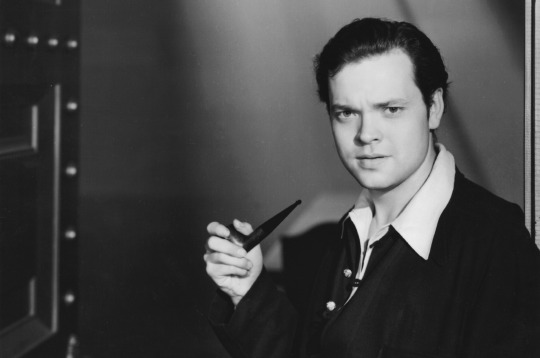
Authors Note: The following novella-length essay on the history of Orson Welles was written to be the December 2018 Directors Marathon as is a tradition for this blog. It was submitted to Geeks Under Grace wherein it was rejected for its excessive length. After several months of consideration as to how to rework the piece into something publishable within the website’s requirements, it is being published now as was initially intended at the AntiSocialCritic Blog.
"I started at the top and I've been working my way down ever since."
- Orson Welles F for Fake
In the early morning of October 10, 1985, Orson Welles suffered a heart attack and died at his desk. He departed the world he had left such a massive impact upon as quietly and mundanely as a great man could. Just hours before the once superstar artist made his final public appearance on The Merv Griffon Show where he talked about his life. Prior to that in the weeks before he had starred in his final cinematic role while providing the voice of Unicron for Transformers: The Movie. His funeral was a quiet affair at a local hotel, surrounded by his surviving close friends and estranged family members from multiple marriages. You might view this humble affair and fail to understand that the man being eulogized was, in fact, one of the greatest artists of the 20th century. Across his massive career, Orson Welles became a pioneer of theater, radio, and film that pushed forward and challenged those art forms radically. He was intelligent, charismatic, well-read and alluring with an ability to command an audience through his words and presence. He was a showman, an actor as well as a magician but also a creative mind with a unique understanding and love for art.
Yet for all of his creativity across a half-century of output he's almost entirely remembered solely for two major events early in his career. In 1938, he performed a radio rendition of H.G. Welles' War of the Worlds that supposedly ginned up a massive panic on the East Coast of the United States. Then in 1941, he directed Citizen Kane for RKO Radio Productions which would eventually go on to become the most acclaimed film in the history of cinema. As a result, his public image rapidly declined. He became recognized as a washed up, unreliable filmmaker with obesity problems and a bombastic personality. This version of Welles would become the stereotype so brutally mocked by comedians on television shows like The Simpsons, The Critic and Pinky and the Brain. Despite being pigeon-holed and written off within a decade of the peak of his career he continued to work as a filmmaker and an actor across North America and Europe for decades until his death. As excellent as his inaugural effort was his career has dozens of excellent films and performances that are well worth revisiting. Thankfully there has never been a better time to go back and review the works of Orson Welles than right now.
On November 2nd, 2018, Netflix published what will likely be the last of his posthumous works with The Other Side of the Wind. I reviewed the film for Geeks Under Grace at the time it released and have spent the last month reflecting on the experience of seeing such a culturally significant film. It's not every day that a lost piece of art is drudged up and rebuilt from the ground up. Beyond that, the film carries with it so many beautiful reflections, moments of brilliant and visual poetry. Knowing that it's the inheritor of such a vital legacy adds a great deal of weight to the film.
When I started writing publicly one of the first major article series I worked on was a project I called the Director Marathons. From 2014-2017 I did a yearly dive every December into the full filmography of a famous acclaimed director. Over the first four marathons, I dug through the collective works of Quentin Tarantino, Christopher Nolan, Guillermo Del Toro, and The Coen Brothers. I also did an additional six-month breakdown on the entire filmography of Steven Spielberg. Now that Geeks Under Grace is my home for writing I want to continue that tradition here. I considered several major filmmakers including Sam Raimi, John Carpenter, George Romero, and Martin Scorsese but with the release of The Other Side of the Wind, it became clear to me that no director more deserve the attention afforded by a total viewing of their body of work than Orson Welles.
What follows are a series of brief historical retrospectives and film analysis's meant to offer a brief look into the seventy-year life of the man of the hour. For every analysis I offer there is a greater and deeper discussion that every subject of his life I bring up can be made. In the name of brevity, I want this series to be largely introductory (12.5 thousand words of introduction...). The secret of great art is that there are always depths to be plumed within it, nuances to observe and details to be discussed. With Welles part of the appeal beyond his incredible eye for detail is his desire to push the boundaries of the art forms he tackled. Every project and chapter of his life could fill a thick book with all the details that go into them. Film improved as an art form because of his embrace of expressionism and innovative use of technology. Filmmakers as vital as Steven Spielberg and Martin Scorsese regularly host his works among the most influential and beloved of the movies that inspired theirs. There is so much immense history and artistry that can be delved into across the full career of Orson Welles.
That being said, as we learn in his inaugural film Citizen Kane, this can be something of a fruitless endeavor. You can never fully know the full life of a man based on what he leaves behind. Much like Charles Foster Kane's home Xanadu, his works stand as an eternal memorial to Welles' incredible creativity. Lost in the ruins of his career is the man that can only be remembered. These works aren't him. They're all we have left of him. There will never be a Rosebud moment where we understand the inner life of Orson Welles. Even so, the life of Welles is a grand one of ups and downs. In spite of the challenges, we shall do our best to look through the art to see the man.
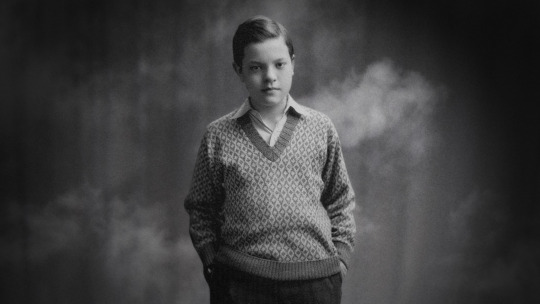
1. The Young Orson Welles
Orson Welles's early life was faced with much splendor and difficulty. Born to Richard and Beatrice Welles in Kenosha, Wisconsin on May 6, 1915, his family was at one point very affluent and wealthy as his father invented a bicycle lamp that allowed the family to move to Chicago. He eventually stopped working and subsumed to alcoholism. Richard and Beatrice would separate in 1919. Orson's mother found work at the Art Institute of Chicago as a pianist performing for lectures. On May 10, 1924, Beatrice would die of Hepatitis, leaving the nine-year-old Welles without a proper family.
Welles lived with his alcoholic father for three years, traveling the world and attending multiple schools. He would eventually settle himself at the Todd Seminary School for Boys in Woodstock, IL where he would set his roots. Later in this life, Welles revealed that Woodstock was the closest thing he had to a home. "Where is home?" Welles replied, "I suppose it's Woodstock, Illinois if it's anywhere. I went to school there for four years. If I try to think of a home, it's that."
The Todd School for Boys ended up being the catalyst for much of Welles intellectual development. His teachers fostered his fascination with acting and the arts and gave the incredibly intelligent young man free rein to expand himself. At age 15, Orson's father passed away from heart and kidney failure. Following High School, the young man found himself awash with opportunities including a scholarship to Harvard University which he declined. After a brief multi-week flirtation with the Art Institute of Chicago, the adventurous young Welles sought a life of travel.
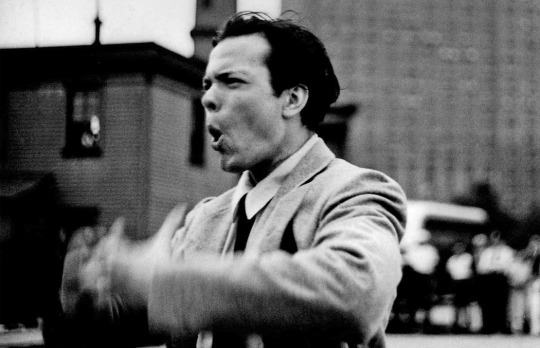
2. Man of the Stage
Welles gallivanted across Europe using the remains of his inheritance. During a stay in Dublin, Ireland the young man approached the manager of the Gate Theater claiming he was a famous Broadway actor that ought to have a position on the stage. The manager didn't believe him yet gave him the job anyway based on his charisma and bravery. His stage debut was on October 13, 1931, in the role of Duke Karl Alexander of Wurttemberg in the play Jew Suss. He would act in several more Dublin productions including an adaptation of W. Somerset Maugham's The Circle at the Abbey Theater. He would try and seek further work in London but failed to acquire a work permit and thus returned to the United States.
Upon his return, Welles made his American debut as a man of the stage at the Woodstock Operahouse in Woodstock, IL. Welles immediately sought out his Irish compatriots from the Gate Theater to stage a drama festival in Woodstock consisting of Trilby, Hamlet, The Drunkard, and Tsar Paul. During this time he also got his first radio gig working on The American School of the Air and shot his first short film.
After marrying Chicago socialite Virginia Nicholas in 1934, Welles moved to New York City where he performed the role of Tybalt in an adaptation of Romeo and Juliet. On March 22, 1935, Orson made his radio premiere on the CBS Radio series The March of Time doing a scene from the 1935 Archibald MacLeish play Panic. Radio would become his primary income as the money he immediately started making with CBS was significant. Welles had moved to New York at the height of the Great Depression and ended up being in exactly the right place to benefit. The Federal Theater Project had been crafted by the Works Progress Administration as a method of helping to bring economic relief to struggling artists. Welles jumped on the opportunity and began funneling money from his incredibly lucrative $1,500/week Radio work into the theater project. President Roosevelt would quip that Orson Welles was the only person in history to illegally siphon money into a government project. The arrangement suited most everyone however and was looked the other way on. Famously Welles became so busy during this time in his life that he hired an ambulance to transport him back and forth across New York City at full speed between his radio performances and his theater directing jobs.
His first work became the incredibly famous and then wildly transgressive production of Voodoo Macbeth. The all-black production recast the traditionally Scottish play and set in against the backdrop of Haiti's court of King Henri Christophe. The production became a nationally recognized and hailed play that toured the country and skyrocketed Welles' name into the spotlight at the ripe age of twenty. The next several years of Welles life became dedicated to this grind of different theatrical productions and radio gigs, culminating his 1937 departure from the Federal Theater Project to create his own theatrical troupe. What would become known as the Mercury Theater opened on November 11, 1937, with an acclaimed restaging of Shakespeare's Julius Caesar set against the background of fascist Europe with himself in the role of Brutus. Here Welles would create many of the lasting relationships and raise multiple actors would follow him through his journey in Hollywood including Joseph Cotton, Everett Sloane and Vincent Price.
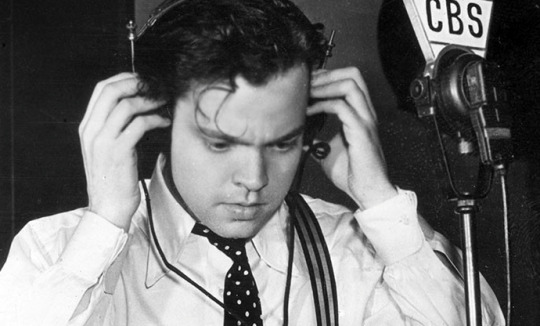
3. Voice on the Radio
Though famously a devotee of the Baird, Welles' recognition was earned by his incredible command of the airwaves. Welles' famous baritone voice became a regular mainstay across America as he became the regular voice for many of the country's most popular radio dramas of the time.
At the age of 21, Welles produced an acclaimed and often criticized version of Hamlet he did for the Colombia Workshop that shaved the four-hour play into a two-part 59-minute audio drama that cut the story of the Shakespearean tragedy to the bone. His presentation was noticeably more emotive than most presentations of Shakespeare at the time which set him apart. The bread and butter of his work throughout the 1930s was his work on pulps and radio dramas. Throughout 1937 over the course of a year, Welles provided the voice for the pulp icon The Shadow. At that point, the vigilante pulp hero in question was one of the largest entertainment properties of the time with novellas and regular radio dramas dedicated to him every week. Having Welles take up the mantle for a time put the fledgling star in the seat of a pop icon.
The moment that shot Welles into the spotlight came on October 30th, 1938 when Orson performed what would become the greatest media scandal of his career with the infamous War of the Worlds broadcast. The adaptation he conceived was fascinating. He took the broad events of H.G. Welles famous science fiction novel and interpreted them in the form of a series News broadcasts as though the events of the book were happening in rural New Jersey and New York City. The following events aren't clear. Welles himself inflated the reaction to the broadcast as though hundreds of screaming civilians scurried across New York City and attempted to flee head first into the Hudson River. More than likely the reaction caused nothing more than a minor stir compared to the massive nationwide reaction that the broadcast was implied to have caused. The broadcast itself did advertise itself on the pretense that it was a radio drama so any disturbed civilians would've tuned in later into the broadcast without the knowledge that it was a radio play. The incident was taken seriously by the United States government and Welles was forced to own up to the brief chaos. Next to his first film, this incident would become the most widely remembered moment of his career and one he took a perverse pride in. Beyond the angry government officials, it caught many an important eye of the day. Among the people who took interest in Welles were the producers at RKO Radio Productions in Hollywood.
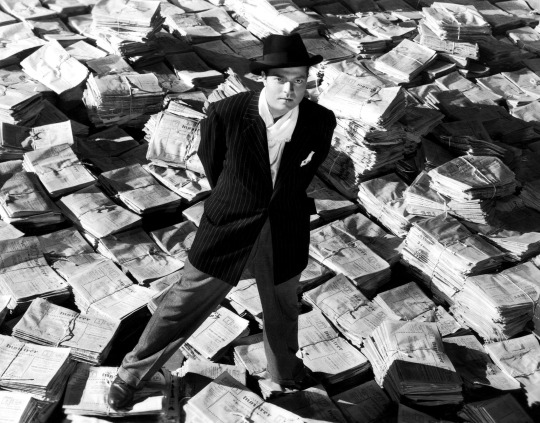
4. Sought by Hollywood
Welles initially had no interest in film or Hollywood. Hollywood wanted Welles because he was an exploding star with exactly the sort of talents and celebrity that could transition into a film career. RKO Radio Pictures approached him with enormous monetary offers but the disinterested Welles was already wealthy. Money was no object to him. If he was going to be dragged into the film industry he was going to do it on his own terms. Thus he sent RKO an over the top ridiculous offer demanding full creative control over whatever he produced with them. To his surprise and the surprise of the enter Hollywood establishment, RKO accepted. He was offered a multi-picture deal with full creative control, upto and including hundreds of thousands of dollars to spend on each film and the right to reserve showing the picture to the studio executives until it was completed.
This has to understood in context. The late 1930s was the height of the studio system in Hollywood. Filmmakers worked at the behest of cutthroat corporate masters who had the right and gumption to control every facet of a film. They frequently re-shot segments from acclaimed films before they're released on a whim based on what they thought worked/didn't work/was marketable by their standards. Even industry greats like John Ford and Frank Capra didn't get to control this much of their films. Given that creatives had so many restrictions the results were stunning. This was the moment in cinematic history when films like Casablanca, The Wizard of Oz and Gone With the Wind were emerging and defining the Golden Age of Hollywood as a time when storytelling and craft were at their creative peaks. For Welles to gallivant into Hollywood and take over the town single-handedly was unheard of. To paraphrase Welles, he had been given the greatest train set a kid ever received and he was looking to use it.
Without knowledge of what he was even doing Welles immediately turned to the greats of the industry of the time to start building his team. His two most important collaborators would be screenwriter Herman Mankiewicz and cinematography Gregg Toland. Mankiewicz was a veteran screenwriter who had had his hand in writing and producing dozens of films since 1926. Toland was fresh off of working on multiple critically acclaimed films like The Long Voyage Home and The Grapes of Wrath, both of which he shot with John Ford.
Welles had the best talent Hollywood had to offer at his fingertips and near infinite power to do as he pleased and began working on different pitches for ideas for his first film. The first idea he conceived was ultimately too ambitious to achieve. He considered shooting an adaptation of Joseph Conrad's Heart of Darkness done in the first person perspective. The project ultimately fell apart as Welles eventually couldn't make his vision work on RKO's budget. Decades later there was a proper if highly altered adaptation of the book with Francis Ford Coppola's Apocalypse Now.
Heart of Darkness would be the first of three pitches Welles initially made to RKO to fill his two film contract. His second idea was a political thriller/comedy called The Smiler With a Knife based on a novel by Cecil Day-Lewis. This project stalled by December of 1939. Welles was uncertain of a plan and didn't want to drag starting production on something indefinitely. He was already behind schedule. Welles and Mankiewicz began brainstorming and eventually, the two started on an idea for a film titled American. Welles approached Mankiewicz during the writing to find that the script he'd written out was hundreds of pages of messy but serviceable ideas. Taking his excellent ability to cut down stories to the bone that he had used on Hamlet, Orson crafted what would come to be known as his first masterpiece Citizen Kane.
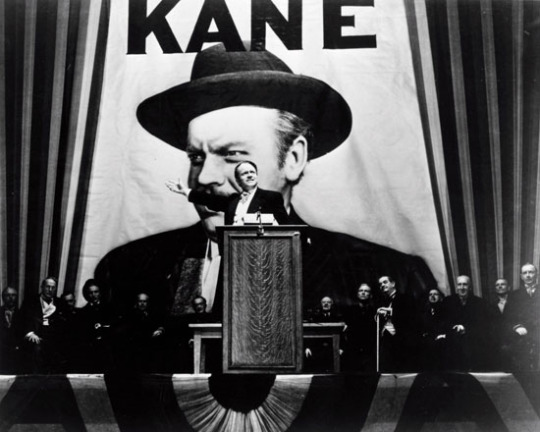
5. Citizen Kane (1941)
I recently did a full-length breakdown of Citizen Kane for Geeks Under Grace and don't wish to relitigate much of what I produced for that article here. What I do think is necessary is understanding how the world reacted to and would ultimately go onto understand the film.
The reaction to the film was both immediate and faltering. The film was met initially by mixed reviews that sited the film's awkward structure as a fault. It wouldn't be years before the film would be released after it's initial run that the film would be subsequently analyzed and relitigated as one of the greatest films of all time.
Well before it's release, the film's satirical target William Randolph Hearst heard the wind that the film was a rather overt critique of his person and attempted to buy the film outright from RKO Radio Pictures to prevent it from seeing the light of day. When that didn't work, he turned to his newspaper network which proceeded to lambast the film in the public eye. The film's release was delayed and by the time it released to the public the reaction was nothing more than a whimper. Citizen Kane bombed in the box office.
The half-century of after it's release brought much rabid discussion and reevaluation of the film into mainstream discussion. In a famed piece of now hotly disregarded film criticism, New Yorker Film Critic Paeline Kael wrote Raising Kane. The essay lambasted Orson Welles, the film in question and called into question the very authorship of the film, claiming that screenwriter Herman Manchowitz deserved more credit for his role in writing the film.
Mind you Pauline Kael's criticism wasn't totally irrational. Kael is one of the most influential critics in history and tends only to be remembered nowadays by her gaffs like her public disdain for Clint Eastwood films like Dirty Harry. Her coming out against Orson Welles is remembered as an enormous artistic mistake on her part but people take the book-length essay she wrote very seriously. As a point, it's worth noting that Welles fundamentally agreed with her on many points. He felt that the director was an overrated position in filmmaking and that film was a collaborative process between the writers, actors and crew that the direct guided and oversaw. Even so, it's not surprising one of the antagonist characters in The Other Side of the Wind was a female film critic.
The most cynical read on Citizen Kane is that it's the film that introduced the concept of ceilings to the cinema. Prior to Citizen Kane, most film productions didn’t film ceilings because they needed open air sets to fit audio equipment. Many proclaimed fans of the film tend to adore it's superficiality more than it's actual storytelling chops as a film. As it stands the most remembered aspect of the film is the Rosebud twist at the end that Welles himself considered as gimmicky. Welles himself had a very conflicted relationship with the film. Welles disliked some of the films minor mistakes and ultimately came to consider the film a curse on his career that he could never live up to. How can anyone build a career off of an instant masterpiece? Even the man who made Citizen Kane couldn't manage to answer that question.
Yet in 1982, Steven Spielberg paid $55,000 for one of the surviving Sled props. Every filmmaker from Martin Scorsese, to Richard Linklater, to Tim Burton, to George Lucas and the aforementioned Steven Spielberg has sited Citizen Kane not only as one of their favorite films but as their inspiration for much of their work. In addition to most every respected film critic from Roger Ebert to Jonathon Rosenbaum has offered their endorsement of the film's strengths. Its legacy is undeniable. Is it overrated? Perhaps. While it's placement in the canon of Orson Welles is certainly hotly debated, there is no denying that Welles began his filmmaking career with a masterpiece for the history books.
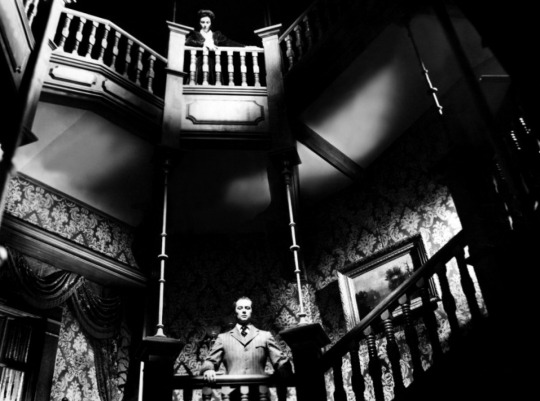
6. The Magnificent Ambersons (1942)
There is a scene in Richard Linklater's Me and Orson Welles where the titular character and his apprenticing young actor Zac Effron that the Welles family was once close to Booth Tarkington. Though not widely remembered today, Tarkington would've been a huge deal to people at the time much how writers like Cormac McCarthy and David Foster Wallace are lionized today. His masterpiece The Magnificent Ambersons would go on to be the subject of Welles’ second major film for RKO.
As Welles continued his work after the debacle of Citizen Kane's release he quickly moved on to fulfill the second film in his RKO contract. His team continued to dig through numerous options and ideas. The most notable idea he didn't end up going with was a pitch for an adaptation of the Bible called The Life of Christ which would've been a strictly adhered adaptation that ultimately fell through twice. Instead, Welles turned to the contemporary masterpiece that was close to his heart. Welles' initial cut of The Magnificent Ambersons is said to have been a masterpiece that rivaled Citizen Kane in quality. He translated the sad story of an old American family's decline into poverty and irrelevance to the cinema and delivered the second masterpiece RKO paid him to. Unfortunately for Welles, it wasn't the masterpiece RKO wanted. The studio shuttered at the bleak film Welles had produced and quickly began underhanded plans to change the film.
Welles was shipped off to Brazil as part of a US Government deal with their government. He was to shoot his third feature for RKO called It's All True which would've involved documentary footage from various festivals and events. While he was out of the country, RKO pulled all of the actors and crew back to the studio lot, cut out the third act of the film and reshot it with a happy ending that completely changed the story of The Magnificent Ambersons. Several cast and crew attempted to warn Welles but he didn't find out until it was too late. By the time he was back in Hollywood, he would lose his rights to change the film. Late in his life, Welles would find himself watching the theatrical cut of The Magnificent Ambersons late one night on television. His then mistress Oja Kodar recalled the experience of nearly walking into the room and catching a reflection of the late 60s Welles sobbing as the movie that clearly meant the most to him was presented on late night television. While the cut we have today is largely excellent, it's far from the vision that Welles had intended for it.
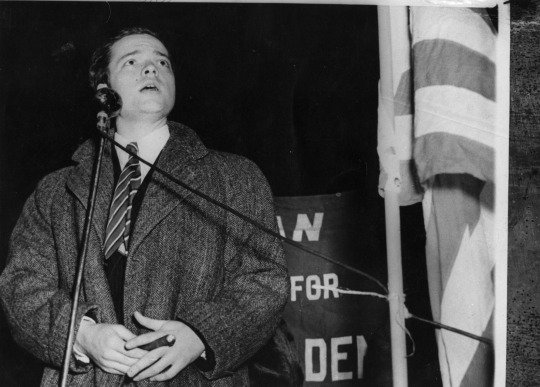
7. Fired from RKO
Welles had already been fired from RKO Radio Productions by the time he returned from Brazil. The studio that had once promised him free reign to produce masterpieces for them didn't like the controversy associated with his films and couldn't figure out how to market what he did film. For them, it was smarter to go into damage control mode and boot out the wunderkind to the streets. The cut of Magnificent Ambersons with the happy ending they did produce didn't do well in theaters and the preferred cut of the film was eventually destroyed. Thus began the air of bad luck that would surround Orson Welles' prolific career. Despite churning out two masterpieces, Hollywood now hated him. As time would go on he would become more and more of a pariah in filmmaking circles.
His last film for RKO which he was producing and directed several scenes for Journey into Fear ultimately saw him being stricken from the credits. His co-director Norman Foster would receive directing credit but later Welles scholars have often retroactively credited Welles as a director too. Welles immediately began damage control for his reputation by prostrating himself over the next several film projects he produced. He started taking acting jobs for films starting with an adaptation of Jane Eyre to try and repair his public image. Interestingly enough the latter film would end up being one of his only romantic performances as that film had been produced to capitalize off of the recent success of historical romances like Gone With The Wind.
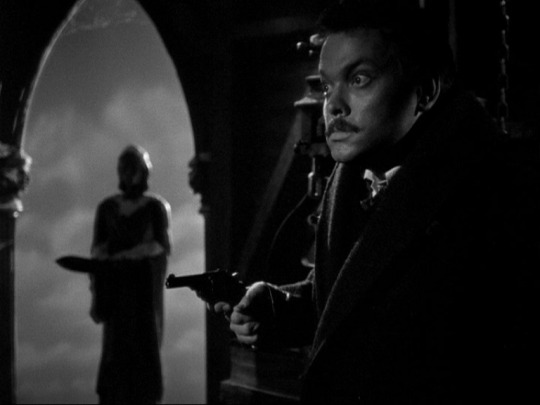
8. The Stranger (1946)
Welles needed to jump back into Hollywood and prove that he was capable of producing something normal that he could sell. With that in mind, he conceived of The Stranger. The film would go on to be his least artistic and therefore most financially successful film. It had been four years since he'd been in the directing chair and he was desperate. He was approached by producer Sam Spiegel after director John Huston couldn't take the job. The result is easily the most Hollywoodish film of his filmography and the one that really represents the director at his most obedient. Despite the darker story, that being about a Nazi holocaust perpetuated being hunted by an investigator portrayed by Edward G. Robinson, the movie was a great deal less artistic and revolutionary by the standards of the time. It was merely a conventional noir thriller. To paraphrase Welles, he did the film with much stricter regulations as a means of proving to Hollywood that he wasn't a toxic director and that he could make money. While the film wouldn't succeed in fixing his reputation it at least made him slightly less toxic. Unfortunately, the film wouldn't lead to any additional career help for Orson. He originally signed with International Pictures to do a four-picture deal after the film as complete. The company backed out of the deal the just weeks after the premiere when it looked initially like the film wouldn't make it's money back.
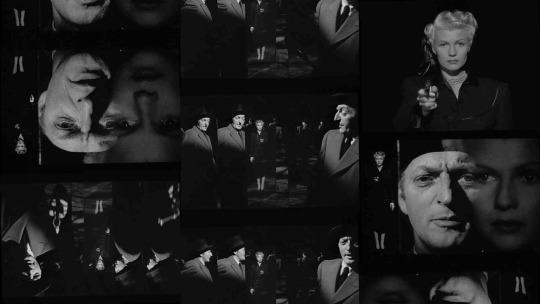
9. The Lady from Shanghai (1947)
The life of Orson Welles has often been described as an illusion, an incestuous juggle between fact and fiction that the ever impressive Welles maintained as a kind false mysticism to increase his legend. While it did give his persona a larger than life appearance it's made tracking the history of Welles into a nightmare. This can be clearly seen in the case of Welles' third masterpiece The Lady from Shanghai. He's told the story of how he pitched the film to Hollywood producer Harry Cohn of Colombia Pictures. After his recent failures Welles turned back to his previous loves of radio and theater and began producing new shows and dramas. His biggest stage production at that point was a play version of Around the World in 80 Days which closed almost immediately within weeks after opening.
Supposedly, as the production was preparing for it's Boston premiere, Welles found himself strapped for cash and in desperate need for $50,000 to move the costumes from the train station to the theater. Desperately he pitched a fake book to the president of Colombia Pictures using the name of a paperback book a young woman was reading next to him, got the money, performed the show and then went back to Hollywood to write and direct the film. It's a great story but it likely isn't true. Whatever truth is in it is questionable as he's told different versions of the same story to different interviewers, each with a different amount of money and circumstance. It's likely that Welles just got called out of the blue by Harry Cohn to direct a thriller and he took the gig. Naturally of course half of the appeal of Orson Welles is the blur of fiction and reality the surrounds the myth of his life. It's fun to speculate but having a historically accurate read of Welles' history is a frustrating knot to untie for scholars.
That film he produced The Lady From Shanghai would become one of his most respected films and widely regarded as one of the weirdest movies. That's not hyperbole either as David Kehr of the Chicago Reader was quoted as saying it was one of the "weirdest great movies ever made". While more conventional by the standards of his previous two masterpieces, The Lady from Shanghai is far from your run of the mill Noir thriller. Welles had initially shot the film in the style of a documentary. That's a strange choice but it grounds the otherwise outlandish story of a sailor being asked to help fake the death of a wealthy man in a kind of distant visual style. Harry Cohn hated the result. Like his previous two films, large segments of the film were reshot to add traditional close-ups and conventional shooting. These shots clashed with the film's already strange visual style and made the film more surrealistic than it already was. The film's most notable contribution to cinema, of course, was the finale in the mirror maze. Without spoiling the story context, the final shootout is mesmerizing and visually bizarre and left an imprint on generations of filmmakers. The trope has returned in numerous forms from action films like Enter the Dragon and John Wick 2 to comics like The Dark Knight Returns. Yet again though, the film flopped in the box office.
As a quick aside, the film also stars his then second wife Rita Haworth with whom he divorced shortly after the film completed production.
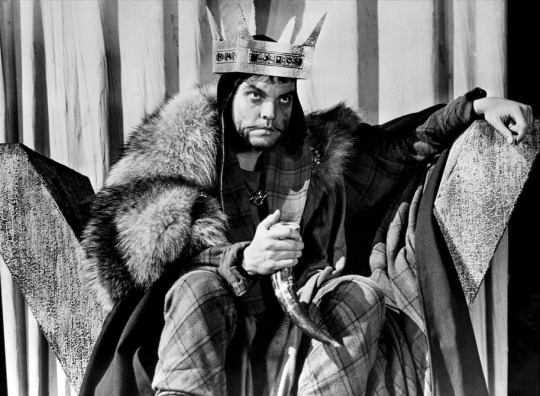
10. Macbeth (1948)
It's strange that Welles' first attempt at a Shakespearian film would come about in such a modest fashion yet his selection wasn't surprising. Being that Voodoo Macbeth was the stage play that put his name on the map, a traditional Scottish production on film made sense to be his Shakespeare film.
Republic Pictures at the time was a subpar studio by the standards of the Big Three. It mostly produced B-Pictures and serials. For Herbert Yates, as the president of the studio, Welles' pitch for a Shakespeare adaption gave him high hopes that he might be able to make his fledgling Hollywood operation into a prestige studio with the right success and went all in on the idea. Welles produced the film on cheap sets and finished the film in just 19 days of production with two additional days of pick up shots. Yet despite being rushed and inexpensive, the film managed to produce something qualifying as a definitive vision of one of Shakespeare's most famous tragedies. That speaks highly of the production given that the play has been adapted dozens of times in cinematic history including versions by Roman Polanski, Akira Kurosawa and most recently Justin Kurzel. Yet Welles' film was benefitted by Welles' unique expressionist take on filmmaking. The cheap stagey sets were masked in beautiful black and white film stock, lit with precision to highlight it's character's emotional state and performed to perfection with Welles in the central role.
Welles had bet that the film would go a long way to repairing his reputation and unfortunately this wouldn't help it. The film was savaged by American critics who despised the over-the-top Scottish accents in the initial release. Welles rerecorded the dialog with American accents for a 1950 rerelease but that version didn't do well either. Both versions were flops and outside of Europe where the critics appreciated it more, there wasn't much support for it. It didn't help that the film was released in close proximity to Laurence Olivier's acclaimed Hamlet which became one of the most celebrated Shakespeare adaptations of all time. It would take years for critics to start appreciating its strengths.
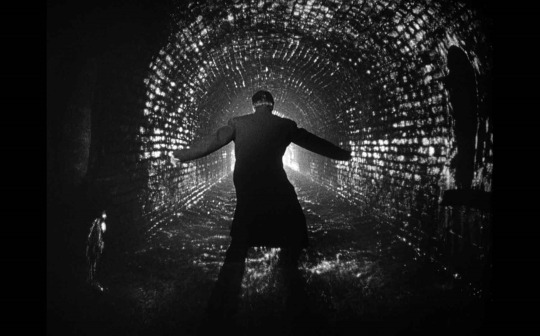
11. The Third Man (1949)
Of all of the films in the Welles filmography, maybe none is more vital to understanding the Celebrity of Orson Welles than The Third Man. Like Jane Eyre, this wasn't a film that he produced or directed in so much as he is remembered for his excellent performance. At that, he's barely in the film at all. The leading man is his frequent collaborator Joseph Cotton. The film was directed by legendary director Carol Reed, famous for films like Odd Man Out, Night Train to Munich, The Fallen Idol, and Oliver! While somewhat obscure now, the director became famous for being one of the most skilled directors in British history. In addition, the film was produced by legendary golden age producer David O'Selznick (Gone With the Wind, King Kong). Welles was asked to play the role of Harry Lime in the film and was offered one of two options for payment for a small role. He had the option of reviewing a portion of the film's profits down the line or a lump sum of money immediately. In a moment of deprivation, he jumped on the money immediately in a financial decision he would come to regret. The Third Man would go on to become the most financially successful film he was ever associated with. Had he chosen profit sharing he would've become immensely wealthy as the film in question has remained one of the most popular noir thrillers of all time.
Welles would later go on to express his opinion that his performance was the greatest "Star" role an actor could've ever asked for. Harry Lime is mentioned dozens of times in the film prior to his first appearance so when Orson Welles finally makes his surprise splash of an appearance the film there is a great deal of weight to his screen presence. His few scenes in the film and his improvised line are usually sighted as the high points of an otherwise widely regarded film. In some ways, this is sadly prophetic of much of the way culture remembers Orson Welles. People think of him as a flash in the pan and we see this in the way culture idealizes individual moments from his films as opposed to his films overall. Most people don't remember the side characters in Citizen Kane but they remember Rosebud. The same is true of The Third Man. People remember Welles' few scenes but they frequently forget Joseph Cotton and Carol Reed's accomplishments with the film outside of Welles. The mere size of his personality creates expectations. First-time viewers familiar with Welles might be surprised to notice he doesn't appear until well after the first hour of the film. Welles is just one turning gear in a much larger story about post-war corruption and profiteering set against the hurt and ruin of Vienna, Austria. His chemistry with Joseph Cotton adds an air of history two the two characters whose lives were once tied together being torn apart by circumstance. His deep baritone voice exudes an air of malevolence as he stares contemptuously on the small people below him. It's a small but vital performance built up to by one of the greatest thriller stories of all time.
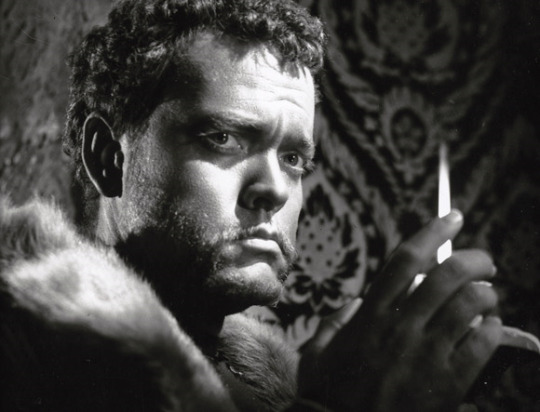
12. Othello (1951)
No film would come to break Orson Welles' reputation more than Othello. Despite earning the Grand Prix du Festival International du Film at the 1952 Cannes Film Festival, Othello would become a curse on his reputation that he would never overcome. Welles had conceived of doing an adaptation of Shakespeare's Othello prior to Macbeth but ultimately chose to go with that play when the concept seemed unfeasible. Welles was approached by an Italian film production company to star and direct a film version of the famed play based on his recent theatrical work which the production company thought would translate over well into the stage play. Welles quickly got to work assembling a team of European filmmakers and actors that he took to Italy. The production was immediately stymied by the surprise Bankruptcy of the production company meaning that the subsequent three years of production necessary to get the film finished had to be self-financed. Though not Orson's fault as the factors were out of his control, this would prove to be the final nail in the coffin of his public reputation. The fact that the film took three years to finish and went over budget put a stigma on his name that he never escaped.
The result was a convoluted production shot across multiple countries including Spain, Italy, Morocco and Turkey that created a mismatched pan-Mediterranean look to the film. The final cut was an atmospheric masterpiece. Welles scholar Jonathon Rosenbaum described the tone as almost that of a horror film more than anything else. There's is an immense dread hanging over the film as we see the unfolding story of interracial love and racial bigotry play out against the backdrop of war and political strife. While a clean cut is available today thanks to the Criterion Collection, early distribution of the film didn't go well. The film received several cuts in different countries and many of the versions distributed had massive audio problems including audio drops and syncing issues. The film was also distributed with multiple soundtracks. Once again the hard work that went into an Orson Welles film was lost to circumstance and failed to materialize until much later.
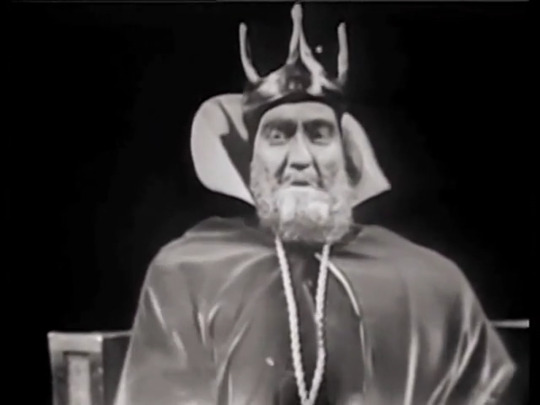
13. King Lear (1953)
In the second of Welles' exoduses to Europe, the director fled the United States for England following the McCarthy hearings and as a result put him on bad terms with the IRS. Orson Welles wasn't a communist but he was a Roosevelt Progressive democrat and disliked the air of paranoia in the United States during the Cold War. Welles was asked to perform the titular role in a CBS Omnibus production of King Lear for television in 1953 which he accepted the role of. The television film was a severely truncated 73-minute version of the play with most of the subplots and extraneous stories outside of the main plot cut out to focus on the main character's descent into madness. Though cheaply produced for television, his performance as Lear is the standout of the film. While he was in the United States to film the production, he was escorted every by the IRS who confiscated his earnings from the production to pay off outstanding taxes being sent back to England.
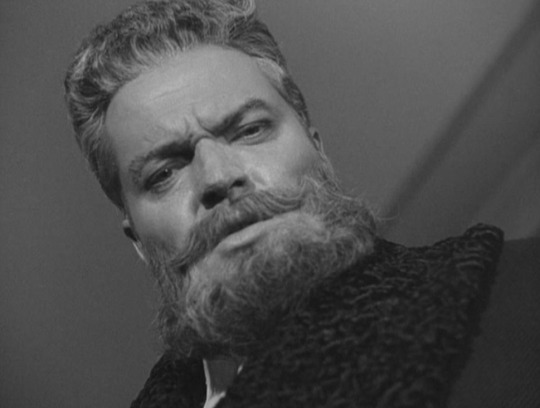
14. Mr. Arkadin (1955)
After the immense success of The Third Man, the movie that had taken Hollywood by storm became a hot ticket item and it's producers wanted to franchise it. Thus in 1951 was born The Lives of Harry Lime. The radio drama starred Welles in his most popular and deplorable character over the course of 52 episodes that represented a prequel to the film. Welles himself was involved in the process of developing the series given that the character was so directly tied to him. This included an episode called The Man of Mystery. This episode would go on to become the primary influence of Welles' newest thriller.
Though lower in budget, Mr. Arkadin was ambitious in its scope. The thriller sought to be a massive thriller set across multiple countries where the stakes of the questions it raised could change the fate of nations. In terms of story, this thriller was one of his most grand and globe-trotting adventures. Mr. Arkadin is a veritable tour de force of settings and European cultures.
Whereas Othello was shot over multiple countries meant to portray the same place, Mr. Arkadin was set across multiple countries in Europe and portrayed the variant beauty of many of it's finest interior sets. Cramped as much of the film looks from a visual standpoint the film did tour Europe across the scope of its production from London, Munich, to multiple places in France and to Switzerland. The story's central mystery involving the investigation of a man with no memory of his past can be difficult to follow but builts to an excellent final race wherein the lead character and the titular Mr. Arkadin must race to Spain to find the same person before the other.
Once again he lost control over the final cut. The postproduction became a trainwreck worthy of Orson Welles' reputation. As scholar Jonathon Rosenbaum discussed in his famous 1991 essay Seven Arkadins, there are no less than seven public cuts of Mr. Arkadin. Welles lost control of the editing process and rights to the film when he missed his deadline and as a result, the producer recut the film multiple times, novelized it, and gave it several releases across Europe in multiple languages. Welles had been reshaping the story and structure during the editing process to improve it and without his guiding hand, the final edits that made theaters were fare from his wishes. Welles would go on to consider the film the greatest disaster of his career. He was a man who suffered many indignities but the utter loss of Mr. Arkadin to multiple cuts was one of his most brutal defeats.
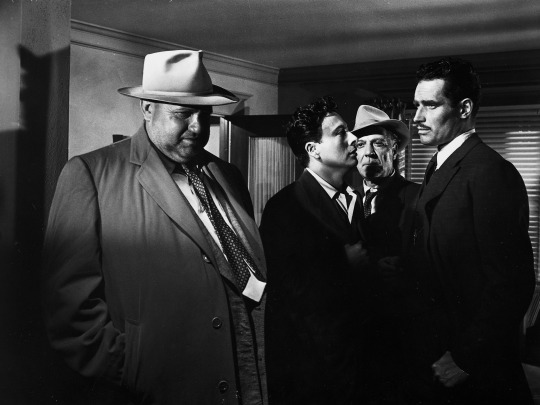
15. Touch of Evil (1958)
Welles had just finished acting in a thriller for Universal Pictures when he was asked by the producers to perform in another film for them as "the heavy" in a crime thriller. Universal was already far underway in developing the story concepts and casting but hadn't settled on a director or a script as of yet. Charlton Heston was already picked to play the lead role in the film. During a cross-country phone call, the film's producers mentioned the casting offer for Orson Welles when Heston made the offhand comment that Welles ought to be the one they sought out to direct the film based on the quality of his previous films. The line went dead for several seconds.
Welles was just getting back to Hollywood after a decade away in Europe. While he hadn't gotten over the pain of his bad breakup with RKO and his previous failures he was eager to direct a Hollywood picture again. Welles signed up to Touch of Evil at Heston's behest on the stipulation that he would get to rewrite the script. Over the course of several weeks of late nights, Welles and his secretary chugged out a new script based on the book Badge of Honor that Universal approved and set to work on.
As with many Welles films, Touch of Evil is rather depressingly remembered primarily for its opening shot. The several minutes long tracking shots at the beginning of the film is legitimately excellent in its pace and scope as we see several minutes of a car with a ticking time bomb in the back seat slowly drive across the US-Mexico border through crowded streets knowing the car could explode at any moment. Naturally of course when I was shown the film in Film School this is where the film was stopped. Many filmmakers worship the tracking shot and then forget to watch the remaining film. What they miss out on is a dark tragedy of corruption and falls from grace. The murder we see play out in real time at the beginning of the film is merely the beginning of a much larger conspiracy as the bombing rouses the attention of a Mexican police officer in the area at the time on his honeymoon and the local police legend Hank Quinlan. The film is one of the starkest examples of contemporary film noir, making the most out of Welles' expressionist love of shadow and darkness. While the opening shot is excellent it's not even the only tracking shot in the film. There are several long tracking shots, several of which we see during the investigation scenes that are just as technically impressive considering how deeply we follow the camera and swing in, out and around the conversations at play.
Universal had loved much of the footage that Welles was sending them at the end of every shooting day. Right up until they saw the rough cut of the film it seemed as though the two parties were on the same page. Alas, Universal Studios did what Hollywood always did to Orson Welles films. The final cut scared Universal with how dark it was. They cut out half an hour of footage and reshot segments of the plot to make it more palatable. By studio contracts, they had to present Welles with a cut of the film before the film went to print and shipped off to theaters. After seeing the new theatrical cut, Welles was distraught. The perturbed Welles skipped out on his daughter's wedding to write a 58-page memo to Universal Studios begging them to make needed changes to the film.
The film was released as the second billing of a double feature and subsequently bombed. In Europe, the film received a surprising level of acclaim, support from major film critics and won two awards at the 1958 Brussels World Film Festival but without American success the film as considered dead on arrival. This was the last straw for Orson Welles. Hollywood had betrayed him for the last time. With this last indignity dealt to his creative vision, Welles packed up and moved back to Europe again.
There would thankfully be something of a re-edit of the film. In 1998, acclaimed film editor and sound designer Walter Murch (Apocalypse Now, The Godfather Trilogy, American Graffiti, The Conversation, The English Patient, Jarhead) recreated a special cut of the film based on the Welles memo that represents the closest version of the film to Welles' vision that remains the definitive way to watch the movie today.
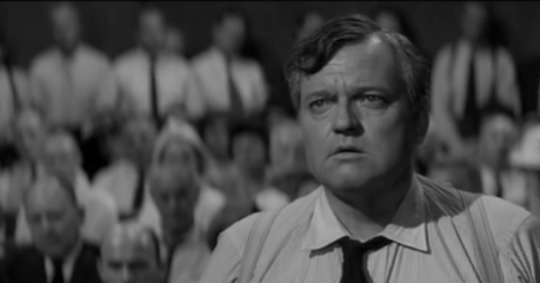
16. Exile to Europe
Immediately after the debacle of Touch of Evil, Welles began to work independently on one of his most ambitious and personal projects to date. Don Quixote would go on to become one of the great obsessions and failures of his life, never seeing a proper cut released. He started accruing footage immediately after finishing his work with Universal by doing some shooting in Mexico. He would continue this process over the course of the next two decades, doing what meager shooting he could across multiple countries in Europe. Unfortunately, time dragged on and the loss of actors to death dragged the film's post-production well into the 1980s without having completed principal photography.
As Don Quixote continued to meld and atrophy, Welles began the next stage of his life by beginning something of a new chapter in the history of cinema. Without the backing of Hollywood money or big investors behind him, Welles began a personal journey as what we would be known as the first truly independent filmmaker. His subsequent series of European films, though cheaper looking and rough around the edges, represented some of the only items of his career that he felt truly proud of in their totality. They were totally his films, unedited by intrusive producers seeking a buck and all celebrated across the European arthouse film scene. Of these, in his later years, he was the proudest of.
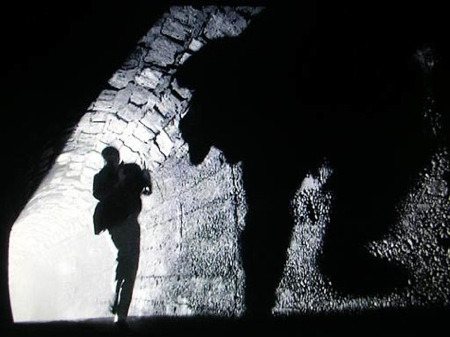
17. The Trial (1962)
Literature was, of course, the love of Welles' intellectual life. He was well read by anybody's standards by the time he reached New York City in his twenties and started adapting Shakespeare better than Broadway was at the time. He understood these great works of literature greater than almost anyone else that had the bravery to take a straight edge to them and crave new versions of them for viewing audiences. Often that meant that his versions diverged from the ideas inherent in the text while still staying true to the spirit of the literature. In the case of Franz Kafka's book The Trial, the story of an innocent man trapped in a bureaucratic cycle of hellish corruption and repetition becomes a different kind of nightmare. To borrow Welles' quote, "He's guilty as h***!"
Welles' monologue at the beginning of the film refers to the story as having the logic of a dream. Seeing the film one can recognize that immediately. The setting, production design and moment to moment logic of the story shifts with surreal precision from moment to moment as the lead character Joseph K. is dragged through a strange inquisition, blamed for a crime that is never explained to him bursting with fear and guilt the whole way through. The film looks and acts like a nightmare, as the scene to scene flow arbitrarily jumps from scenes of stark visuals, tense chases, and heavy shadows. Never before or after has Welles' overt love of expressionism been put to such beautiful use. Then again it's hard to tell where the movie begins and the budget ends. Much of the film is shot against industrial blight as we see buildings lined with electrical wires and technology. It's a strange look that contrasts with the sleek, fast-paced cinematography at times. It's never clear that Welles isn't just shooting this at the first industrial park he could find that was available or if these flourishes of ugly utilitarian electronics are part of the point. Maybe they're expressions of the bureaucratic machine that is chewing K alive.
Of all his successes, The Trial is the one that Welles has gone on record as saying was the greatest thing he ever created. Beyond the constraints of a low budget, everything we see on screen is Welles' vision. Given the years of hardships that incurred his previous productions, it's not surprising he'd hold a film that represented his own vision in such high esteem. That said, The Trial wasn't the film that he considered his favorite.
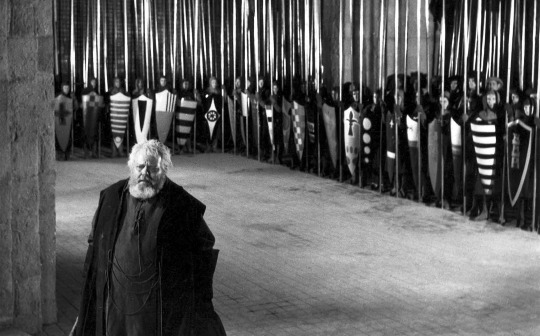
18. Chimes at Midnight (1965)
Welles once said in an interview that if he ever had to argue his way into heaven based on his work, he would try to do so with Chimes at Midnight. Originally titled Falstaff in some regions after the central character, Chimes at Midnight represented the most loyally produced and loving adaptation of Welles' own career. It was based primarily on William Shakespeare's Henry IV Parts 1 and 2 with elements of Henry V added. For Welles, the book's central character of Falstaff, the jolly, rotund and disgraced nobleman was one of Shakespeare's greatest creations. Naturally, Welles saw a great deal of himself in Falstaff. The character was by his nature a good man, albeit a lusty, cowardly slob and a liar with a heart of gold. He was innocent and naive in the manner of a child. To Welles, he was the representation of Merry Old England and the fictionalized nostalgia for the past that imbibed so much of English literature from Shakespeare to Chaucer. He was an implicit rejection of the notion of modernity. Welles had tried before to stage a version of what would become Chimes at Midnight earlier in his life called Five Kings that ultimately proved too technically complicated and slow-paced to work properly. With Chimes at Midnight, Welles finally achieved a lifelong dream in portraying his favorite Shakespeare character in all of his exhaustive glory.
Much like The Trial, there is much to be desired about Welles' vision for medieval England. The claustrophobia and tension of his previous film gave way to vast open spaces, joyous celebrations in wide open inns and regal grandeur of the Royalty. Henry IVth is the story of the aged father passing down his title to his namesake son and forcing him to grapple with leadership and responsibility. For the young Prince of Wales, King Henry and Falstaff are the literal representatives of his duality between responsibility and youth. It's a kind of tragedy of maturity wherein Henry must put aside Falstaff and grapple with the brutal realities of the real world. Naturally, Welles goes on in on that brutality. Chimes at Midnight comes with one of the most brutal and influential battle scenes in cinematic history. The carefully shot battle scene incorporated dozens of extras, horses, and grime to produce one of the least romantic depictions of battle yet put to film. Welles said the battle scene was meant to be intentionally brutal to emphasize the idea of the death of chivalry in battle. We see that clearly as swords clash and bodies pile up. Visually speaking it's hard to deny that the battle wasn't hugely influential on generations of filmmakers, being referenced in everything from Kenneth Branaugh's adaptation of Henry V to Mel Gibson's Braveheart and even in the Battle of the Bastards in Game of Thrones.
Naturally, a shoot of this size and scope proved to be greatly difficult on Welles' budget. Europe is naturally awash with castles so locations proved to be available for the film's striking scenes set against the Royalty. Most of the shooting in the Inn was done on a sound stage that Welles had built specifically for the production. Unfortunately, the film lacked proper audio recording technology requiring nearly all of the audio to be rerecorded in post-production. Despite the limitations, the final product is staggering to behold. It's a loud, boisterous and joyful tragedy right up until the bitter emotional end. Many critics consider Chimes at Midnight to be Welles' greatest achievement above and beyond Citizen Kane. Welles would be inclined to agree.
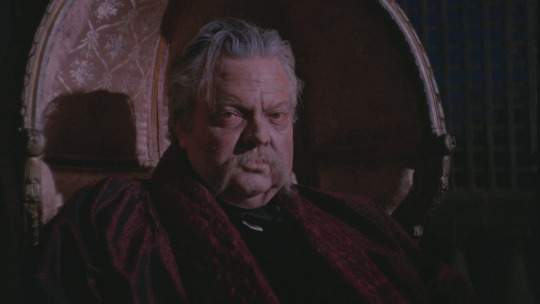
19. The Immortal Story (1968)
Of all the films in Welles' filmography, none represents quite as massive of a digression as The Immortal Story. Immediately the viewer notices that the film is his first film up until this point that was shot in color. As Welles discussed with his protege and biographer Peter Bogdonvich, he always preferred to shoot his films in black and white as he felt that the format did more to help present performances better than color did. With The Immortal Story, he seems to have broken his rule for reasons that aren't quite clear. The results offer some hints as to what was going through Welles' decision-making process. The film is bizarrely alluring to look at. Considering his visual style was more receptive to surrealism and stark visual symbolism, a cursory review shows the film to be one of the most luscious and beautifully shot films in his filmography.
With an understanding of the story, the logic of this seems to come into focus. The story follows the life of an ancient European nobleman who in his older years has sought to make a story that he once heard come true. In the story, an old man pays a sailor five guineas to have an affair with his life before sending him off to sea. Fulfilling the story and making it a true story becomes the old man's obsession. Paying an older fellow Noblewoman and a young sailor he meets on the street, the man observes from a distance as the scenario he contrived into reality forms as the Noblewoman and the sailor bond and intimately perform their task before they're forced to part ways.
While sexuality does technically exist in several of Welles' films like Citizen Kane and The Trial as plot points, The Immortal Story holds the bizarre position of being one of the only Welles projects wherein sexuality is a major theme of the story and one rooted in its story's ideas and anxieties. One can almost look through the allure of its technicolor dreamscape and intimacy to see a depiction of Welles' vision for what the very nature of storytelling is. Through the shrouds of more traditional filmmaking, Welles seems to be using this story as a kind of metaphor for the drive and anxiety that forms storytelling itself. At its core, Welles seems to suggest that the core of art is a perverse need to reproduce and express one's innermost anxieties on display. Though unconventional and likely overly sexualized for some viewers, The Immortal Story presents us with a disturbingly honest sort of autobiography of the artist's soul.
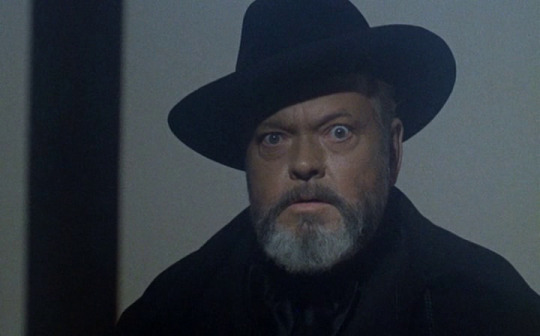
20. F for Fake (1974)
Orson Welles' final completed film represents one of the most avente-garde and experimental pieces of filmmaking in his filmography. F for Fake is technically a documentary but it's a very fast paced, tangential and esoteric piece of filmmaking that jumps across multiple boundaries and stories to explore multiple facets of a central theme. That theme is the idea of "fakeness". The central story follows a pair of famous frauds. The first is Elmyr de Hory, a Hungarian painter that made his living as an art forger recreating hundreds of the most popular pieces of contemporary artists including Pablo Picasso. The second is Clifford Irving, Elmyr's biographer who was caught forging an interview with the mysterious media mogul and recluse Howard Hughes.
While the story focuses primarily on their accomplishments and controversies the entirety of the piece is extremely tangential and jumps across the lives of dozens of people including Orson Welles himself. Welles takes time in the piece to discuss his history with lies, the War of the Worlds broadcast that he played up the legend of, how he got his first acting job by lying, and what the actual effect of lying means to the art world. Welles muses on the consequences of every one of the personalities he profiles and comes to many fascinating insights about the nature of their dishonesties. While he makes no bones about the fact that they were frauds, plagiarists and charlatans he also finds a great deal of sympathy to be found amongst the tragedies of their lives.
Then at the moment of most brutal honesty, he pulls back and asks what it all means in the scheme of things. Merely by observing a beautiful European church lined with hundreds of year old statues and garments of stone. He calls it a monument to human dignity and to God's grace and power. Yet this monument has no author or name to it. It merely stands the test of time as an expression of humanity's greatest desires and hopes. As essayist Kyle Kalgren noted in his excellent analysis of the film, Welles seems to come to the opposite conclusion of his seminal film Citizen Kane. "We'll always have Xanadu, so who cares about Rosebud?" Maybe the film's final conclusion is that art is greater than the individuals or money involved and that fake art is still art. Maybe a fake painting that matches the quality of the real thing is as valuable as the real thing. Then again maybe it doesn't. Welles ends the film with a beautiful story told by his then-mistress Oja Kodar detailing her family's lineage and the untold history of a great unknown art forger that represents one of the most exciting and beautiful moments of the film before Welles pulls the rug out on the audience with the film's final moments.
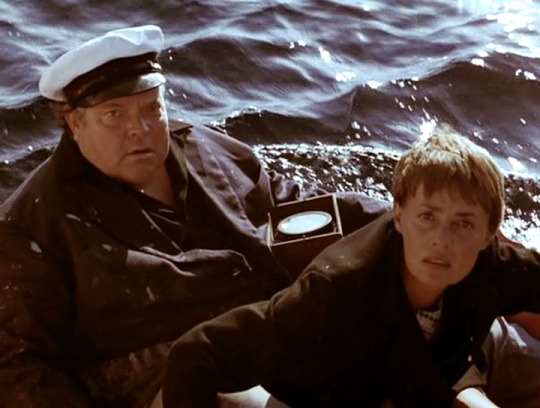
21. The Final Years and Unfinished Projects
The final years of Orson Welles' life can reasonably be described as a sad march into oblivion. Welles returned to the United States in 1970 hoping to find a home among the greats of New Hollywood and quickly set about trying to produce new films. What followed was fifteen years of financial breakdowns, gradual periods of acting in films for money and then turning around and investing it in his film productions. After 1978, Welles never completed a project for the final seven years of his life. Yet he still continued to work, taking acting and commercial jobs and desperately attempting to finishing his outstanding projects. His final completed projected was Filming Othello. The film is nothing more than a conversation of Orson Welles discussing the production history of his film Othello that he produced for German television. The film was included with the 2017 Criterion release of Othello and is well worth observation for fans of Orson Welles. If it impresses anything upon its viewer it would be Welles' strange sense of late-period melancholy and modesty. He states early in the film that nothing he's produced is worthy of the art that he's attempting to adapt and that he was merely a filmmaker. He would try to produce a second documentary called Filming The Trial but didn't complete it before his death.
He shot footage for multiple films in this time including an adaptation of The Merchant of Venice, a thriller called The Deep, segments of Don Quixote and finally his recently completed film The Other Side of the Wind. The latter of these he started on as early as 1970 and proceeded to shoot and editing throughout the remainder of his life. The film would go on to become the greatest legend of his filmmaking career. Despite six years of on and off production, nearly a decade of legal red tape following the Iranian Revolution (the film's financier was the brother in law of the Shaw of Iran) and years of faltering post-production, the film was never completed in Welles' lifetime. Prior to his death he discussed taking on directing several additional films including The Cradle Will rock, Ada or Ador: A Family Chronicle, Saint Jack (which his protégé Peter Bogdanovich would direct) and a full adaptation of King Lear.
There is a great deal of speculation about why many of these films never got done in the final seven years of Welles' life. Some consider Welles' final years to be too self-destructive and purposely unproductive but by all indications, Orson spent these years grappling with crippling financial troubles and red tape between his sparse moments of being able to film.
In a desperate move to try and garner sympathy and attention, Welles used an appearance during the AFI festival meant to offer the aged Welles with a lifetime achievement award for his work as a chance to promote his newest film. During the acceptance speech, he proceeded to show off footage from The Other Side of the Wind which was suffering from a lack of funding and wouldn't be finished and blatantly hinted that the film was short on funding. The incident was interpreted plainly as a moment of panhandling and desperation.
Welles wasn't a religious man and told two conflicting thoughts on his beliefs late in his life. On one occasion he stated that he was an atheist when asked to perform a prayer. On another occasion when asked he said that he believed in God but didn't think God would be interested in his prayers. In any case, Welles was apathetic to faith. His sole drive seemed to be his desire to create and act out the stories that inspired him and no one at this time wanted to respect or enable his talents. Unable to accomplish that which drove his life, his final years were spent in relative despair.

22. Transformers: The Movie (1986)
Orson Welles' final cinematic role was portraying Unicron in Transformers: The Movie. If there were any more of a modest place for the one time giant to descend, I cannot think of one. Granted this probably didn't represent his most serious compromise. During the production of The Other Side of the Wind, he spent several evenings with his cinematography editing softcore adult films so that the two of them could get back to work and keep him financially solvent. He recorded his audio for the film just five days before his death. Regardless of his opinion on working on the animated film, these final years of Orson Welles' life represent him at his lowest point. He was forced to take any gig he could book himself for. Famously he took an enormous amount of commercial work, which included an infamous Champaign commercial in which an inebriated Welles attempted to give an elegant speech about the mystique of Paul Masson wine only to slur his sentences to a depressingly hilarious degree. In his late period speeches, you really sense the desperation and melancholy of his station in life. As Welles performed his final voiceover on Transformers, his aged and decrepit voice proved too rough even to fill the role. The audio designers were forced to augment the voice-over performance to improve it.
Welles perished less than a week after performing his lines for the film from a heart attack at the age of seventy. He died at this desk while typing up stage directions for a project that he and his cinematographer Gary Graver were going to shoot the following day at UCLA. In a sense, he died doing what he loved. His body was cremated and a small funeral was held for him where in his closest friend and three daughters attended. This was the first instance that the three children of different marriages ever met. Two years after his death in 1987, his wishes were respected and his ashes were buried in Spain at the home of a friend and bullfighter Antonio Ordonez.
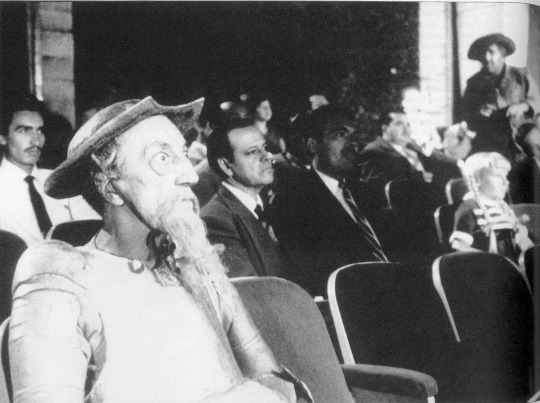
23. Don Quixote De Orson Welles (1992)
The years after Welles' death brought a great deal of pain and hardship for the people whose lives he most affected. It also brought a great deal of division and indecision. Depending on who you ask the following two decades after his death brought an enormous amount of hostility and contention between the inheritors of the Welles legacy. Multiple people sought claim to Welles' history and tried to make his works available. Since multiple studios owned the rights to his various films, rereleases of his movies became contentious. Universal was sued by Beatrice Welles when it attempted to reconstruct Touch of Evil only for his to settle out of court with the studio. She later claimed her suit was caused by a lack of communication that wouldn't have happened had she understood their plan to follow Welles' famous memo. Beatrice additionally caused a great deal of controversy in 1992 when she attempted to fiancé a restoration of Othello that many Welles scholars have come to scoff at for it's incompetent and sloppy restoration.
Cinematographer Gary Graver spent much of his life following Welles' death mourning the loss of his creative partner. Welles was his primary source of income and one of his closest work associates and friends for fifteen years. Graver would spend many of the final years of his life attempting to build a cut of The Other Side of the Wind that ultimately never came to fruition before his death in 2006.
Orson's mistress and creative partner Oja Kodar inherited the Welles estate and attempted to do everything in her power to preserve the memory and works of her lover. In 1995, she co-wrote/co-directed a documentary called Orson Welles: The One-Man Band. While she has settled into a comfortable life in Croatia working as an artist and an innkeeper, she's stayed notable through her association with her late lover. Depending on who you ask, she's responsible for some of the legal troubles that kept The Other Side of the Wind out of the spotlight, however, her role in preserving the later works of Welles is contentious. By any regards, Oja is a worthy inheritor of the estate and did everything she could to bring his films to the public light.
In 1990, she sold the rights to some of Welles' remaining footage from Don Quixote to Spanish producer Patxi Irigoyen, desiring to see some sort of version of the film come to fruition. Working with director Jesús Franco, the filmmakers stitched the decomposed footage shot across multiple formats into a semi-coherent two-hour film that they showed at the 1992 Cannes Film Festival under the title Don Quixote De Orson Welles. Without proper audio, the crew rerecorded dialog from new actors. The result is a rough looking, rough sounding and merely academic exercise that barely registers as a completed film. There was a rough cut that Orson Welles himself had finished that film critics Juan Cobos and Jonathon Rosenbaum have seen that according to them looks nothing like the hodgepodge of a film that Irigoyen and Franco assembled.
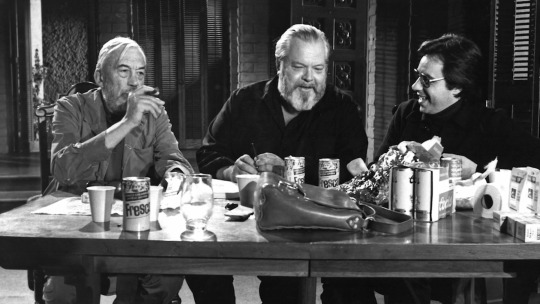
24. The Other Side of the Wind (2018)
Like with Citizen Kane, I don't wish to relitigate the entire history of The Other Side of the Wind. Having already reviewed the film and shot a series of interviews with Welles scholars Josh Karp and Jonathon Rosenbaum, I've thoroughly discussed the history of Welles' so-called "final film". What I would like to emphasize is just how the film finally came to fruition after nearly fifty years of litigation, red tape, and creative challenges.
After Welles' death, the footage from his shooting was locked in a French vault awaiting decision making and legal red tape. Under French law, Welles still technically had the rights to the film but the Iranian government had a claim on it as financers. In addition, there was a great deal of contention as to how to move forward. The surviving legacy holders of Welles' work Oja Kodar, Beatrice Welles and Peter Bogdanovich all had differing desires that needed to be respected. In order to get finished the film would need an enormous amount of diplomacy and money.
Following several faltering offers to finance the film, polish filmmaker Filip Jan Rymsza stepped in with a bid to take over the film's post-production. Teaming with producers Jen Koethner Kaul and Frank Marshall, the team began to work on acquiring the film and by fall of 2014, the prep work had begun. By early 2015 the group had gained access to the workprint of the film and had gotten Peter Bogdanovich on board the project. They garnered enough money to get access to the film's workprint by selling distribution rights to the film. Filip began the careful dance of reaching an agreement between Beatrice and Oja and by spring of 2015, the gears were turning with the hope of turning the film around in time for Orson Welles' 100th birthday that year. On May 7th, the team began a forty-day Indiegogo campaign to attempt to raise the necessary funds to finish the film's postproduction. Despite extending the campaign an additional month and lowering the funding goals, the $406 thousand that was accumulated while inspiring wasn't enough to complete the film. Towards the end of 2015, it began clear the film was going to require additional help from a new distributor.
The campaign stayed quiet for nearly two years as behind the scenes discussions went underway until March 2017 when they finally announced that Netflix had purchased the distribution rights. Within weeks, the footage was moved from Paris to Los Angeles and the nearly year-long production process was underway. An enormous amount of work was needed to processing the hundreds of hours of footage into a manageable process. Editor Bob Murawski (The Hurt Locker) worked with a team to transfer the footage shot over multiple formats into digital, painstakingly matched the hours of audio to the footage and started slowly editing the film using Welles' mismatched notes and script. Welles problematically evolved his vision for the final film throughout the process of shooting the film. The result of this was that editing the film became a difficult process of making executive decisions as to what to keep and what to send to the cutting room floor.
By January 2018, a rough cut of the film had been finished. At this point, the producers held the first screening for the film to a group of Hollywood insiders including Paul Thomas Anderson, Quentin Tarantino, and Rian Johnson. The screening also included John Huston's son Danny Huston, Crispin Glover, Peter Bogdanovich and the surviving crew of the film. The next several months brought about the final aspects of post-production which included composing the film's original soundtrack. French composer and musician Michel Legrand, who had previously composed the soundtrack for F for Fake, was brought in and started recording the soundtrack in March 2018.
The film's initial premiere had been planned for the Cannes Film Festival however that festival changed the rules arbitrarily in regards to its willingness to premiere digital films from online distributors like Netflix. Subsequently, the premiere was pushed until August 31st at the 75th Venice International Film Festival. Naturally, the premiere that was most important was it's vaunted premiere on Netflix which was eventually announced for release on Friday, November 2nd, 2018. Generations of Welles supporters and fans finally were afforded the opportunity to view Welles' final theatrical premiere that day. Additionally, several movie theaters across the United States premiered the film the same weekend including the Music Box Theater in Chicago where I personally attended the Saturday morning premiere.
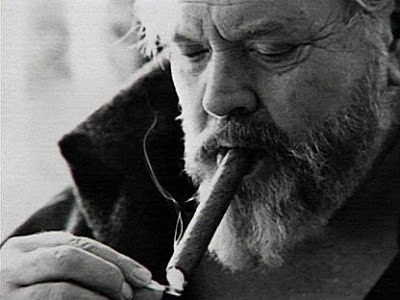
25. Conclusion: The Legacy of Orson Welles
We are now living in the greatest time to be an Orson Welles fan. The old truism is that artists are never appreciated until after they die but now in 2018 the full lot of his estranged filmography is finally starting to make its way into the public eye. Welles is beloved as one of the filmmakers in history and his work is regularly mentioned in the same breath as the masters like John Ford, Ingmar Bergman, Akira Kurosawa, and Jean Luc-Godard.
Every year the studios that own the rights to Welles' films go out of their way to restore and re-release more of his films. Just in the past few years The Criterion Collection has gone back and released Chimes at Midnight, The Immortal Story, Othello, Filming Othello and The Magnificent Ambersons on Blu-ray. Chimes at Midnight's release on home video coincided with its first public touring in the United States in decades as the film's restoration was displayed on dozens of movie theaters across the country in 2016. Citizen Kane, The Third Man, Touch of Evil and Macbeth all have excellent Blu-ray transfers. His lesser known and regarded films like The Stranger and The Trial are in the public domain and are available for free online.
It's a shame that the late director's work has for long been relegated to the dustbins of history. Many of his best pieces of film were left to rot for decades in vaults with no public viewing or demand. Now almost all of his work is available to buy on the most up to date home viewing format. Fans of cinema ought to seek these films out. Though obscure and often rough around the edges, Orson Welles produced one of the finest outputs of work in the history of cinema. He persisted against a lifetime of odds and gave the world everything he had in him until there was nothing left to give. In the end, he was a more modest, fragile and melancholy soul than the bombast, ego and strength of his personality let on.
As Jonathon Rosenbaum discussed in during our FVTV interview this November, once he'd met Welles in person he no longer fanaticized the idea of wanting to be him. Even so, Welles was everything he was sold to be. He was kind, intelligent if a bit rude but he was always himself.
Resources/Sources:
Previous GUG Reviews: Citizen Kane, The Other Side of the Wind Documentaries: Magician: The Astonishing Life and Work of Orson Welles, The Battle Over Citizen Kane, They'll Love Me When I'm Dead, Filming Othello Books: Citizen Kane: A Filmmaker's Journey by Harlan Lebo, Orson Welles' Last Film by Josh Karp, The Encyclopedia of Orson Welles by Chuck Berg and Tom Erskine Video Essays: MovieBob: Citizen Unicron, Kyle Kalgreen: F for Fake, Kyle Kalgreen: Chimes at Midnight, Razorfist: The Third Man, Cinemologists: Mr. Arkadin Online Researches: Wikipedia, When Radio Was
youtube
0 notes
Text
Watches Inspire New Books


In “My Time,” watches are set against blue denim backgrounds. The display references the jeans company owned by the family of Sandro Fratini, the watch collector.
Watches inspired four volumes published in recent months: Two offer looks at real or ideal collections, one tells the story of a watchmaking legend and the fourth applies the illustrated genre to timepieces.
“Rolex: The Impossible Collection,” by Fabienne Reybaud
Assouline, 194 pages, $845
Tackling the subject of Rolex for Assouline’s “Impossible Collection” series posed a twofold challenge for Fabienne Reybaud, editor of watches and jewelry at the French daily Le Figaro. Rolex would not collaborate, and none of the owners wanted to be identified. Still, Ms. Reybaud succeeded in tracking 87 Rolexes that she considered rare enough for the book.
It makes clear that all the timepieces are objects of desire, although all are not created equal. On the cover, for example, is the most coveted of all Rolexes: the Cosmograph Daytona Ref. 6239, also known as “Paul Newman’s Paul Newman.” This watch made headlines in 2017 when it sold at auction for $17.8 million. The buyer’s identity remains a well-guarded secret — and for those who may wonder whether Ms. Reybaud uncovered that information, the cover image was provided by Phillips, the house that handled the auction.
“The ultimate fantasy of any Rolex collector,” Ms. Reybaud said in an interview, is the Ref. 4113 Split Seconds Chronograph, which features the first complication ever created by Rolex. Of the 12 pieces that were made, the locations of only eight are known; in 2016, Phillips sold one at auction for 2.4 million Swiss francs.

“Rolex The Imposible Collection,” from the Assouline book series.
“Another rare and wonderful model is the ‘Pan Am’ GMT-Master commissioned by the airline,” Ms. Reybaud said. (The watch’s bicolor bezel, in red and blue, earned it the nickname “Pepsi-Cola.”) A new GMT-Master II, also featured in the book, was introduced last year.
The book also touches on a lesser-known chapter in Rolex history: Its experiment with quartz technology in the shape of the Datejust Oysterquartz Ref. 17000, proof, according to Ms. Reybaud, that Rolex has been both an industry leader and a follower.
“My Time,” by Sandro Fratini, co-edited by Christie’s
FAM Publishing, 688 pages; there are four versions of the limited-edition book, priced from $750 to $1,600
“My Time” highlights 650 timepieces from the collection of Sandro Fratini, an Italian watch fan whose family founded the Rifle jeans brand in 1958. The book’s photographs show the watches against blue denim backgrounds, a tribute to Mr. Fratini’s family enterprise. The text is in Italian and English.
“My story is a love story of watches,” Mr. Fratini said during an interview in Geneva. “I love the harmony they have inside; they have a soul.” He fell in love with watches at the age of 8, when his father gave him a steel Longines wristwatch for his First Communion. At 20, he started buying. Today, in his 60s, Mr. Fratini owns more than 2,000 exceptional timepieces, mostly by Rolex, Patek Philippe, Cartier and Audemars Piguet.
“When I started buying 40 years ago, it was easier to find interesting watches,” Mr. Fratini said. “I looked for them around the world and I always caught them.”

There are four versions of “My Time,” which showcases 650 pieces from Mr. Fratini’s collection.
On the cover is a Patek Philippe World Time Ref. 1415HU, a very few of which were made between 1939 and 1954. Mr. Fratini also owns not one but two of the Rolex Ref. 4113 Split Seconds.
His favorite, however, is a stainless steel Patek Philippe Ref. 1518, a watch introduced in 1941 and the world’s first perpetual calendar with chronograph. That reference has fetched over $10 million in auction. Mr. Fratini says he owns two.
“François-Paul Journe, Invenit et Fecit,” by Jean-Pierre Grosz
FP Journe SA, 357 pages (in French), 235 Swiss francs (about $231)
The watchmaker François-Paul Journe said he had been thinking about his legacy for more than a decade before he finally got around to publishing his biography.
“Most people do not know what I did before 1999,” Mr. Journe, 61, said at the book launch in Paris. “I wanted people to know that my brand was not built out of thin air.”
In 1999, Mr. Journe founded his Geneva-based brand and presented his first signature chronometers. (“Invenit et Fecit,” Latin for “He invented it and made it,” is the house’s motto.) Few probably know that Mr. Journe, who was born in Marseille, France, in 1957, was an unruly teenager who struggled in school. Showing promise at watchmaking school, Mr. Journe honed his skills by restoring antique clocks in his uncle’s Paris atelier. He produced his first handcrafted tourbillon pocket watch in 1982, and broke out on his own in 1985.
“Success is not easy even when you have talent,” he said. “You need both luck and wisdom to make the right decision at life’s crossroads.”

The story of François-Paul Journe is told by Jean-Pierre Grosz, a longtime friend.
Jean-Pierre Grosz, a longtime friend of Mr. Journe’s, includes engaging sections about Mr. Journe’s fascination with the 18th-century master clockmaker Antide Janvier, relationship with the British horologist George Daniels and longtime collaboration with the watch specialist Jean-Claude Sabrier, whose own extensive horological library is kept at Mr. Journe’s atelier.
“Of Watches and Men,” by Geoffroy Ader and illustrated by Neis
AW Editions, 71 pages (in French; English version to be published in March), 20 euros ($22)
In this book, the watch expert and auctioneer Geoffroy Ader traces important episodes in the lives of 12 influential figures of the 20th century through the watches that they owned and loved. (A sequel, dedicated to famous women and their watches, is planned.)
The illustrations, which add a comic-book dimension to the narrative, are the work of Ines Ader, Mr. Ader’s wife, known professionally as Neis.

The graphic book “Of Watches and Men.”
Mr. Ader himself has brought the hammer down on a few historical timepieces, including the gold Rolex Datejust that Hans Wilsdorf, the founder of Rolex, gave to Konrad Adenauer, the first chancellor of the Federal Republic of Germany after World War II. “It was only natural that I would want to tell the story of historical watches,” Mr. Ader said.
They include the Rolex Oyster Perpetual that Sir Edmund Hillary wore during his 1953 ascent of Mount Everest, the extra-thin Omega that John F. Kennedy had at his presidential inauguration and the Omega Speedmaster that landed on the moon in 1969 with Buzz Aldrin. There also is the story of Mahatma Gandhi’s beloved Zenith pocket watch, a gift from Indira Nehru, that was stolen shortly before India’s independence but returned by the remorseful thief several months later.
“This is a simple book, but you will learn a lot of things,” Mr. Ader said.
[Source]
1 note
·
View note
Text
Oscars: Ranking the Best Years Ever for Best Picture
With 14 nominations, La La Land has been the Best Picture frontrunner since Oscar nominations were announced and even before that with its raved-about North American premiere at the Toronto International Film Festival. With one film dominating the conversation, it’s easy to overlook the fact that 2016 boasts a particularly strong Best Picture line-up. The eight films surrounding La La Land —Arrival, Fences, Hacksaw Ridge, Hell or High Water, Hidden Figures, Lion, Manchester by the Sea and Moonlight — have received critical praise, as well as strong box office numbers. That’s not always the case: For some years, voters clearly struggled to find five quality nominees. (The category has expanded and contracted over the decades; between 1931 and 1943, 10-12 nominees was the norm; that number shrank to five in 1944, eventually returning to up to 10 in 2009.)
Even though 2016 has been a very good year, it’s not the best year for Best Picture nominees. We combed through the Academy lists from the 1920s to today and ranked the Top 15 Best Picture groupings — the years where (almost) every film is a winner. Read our ranked list below and then weigh in with your own picks.
(Dates below refer to the years in which the films were released. The actual Best Picture winner from each year is indicated in bold.)
Related: 2017 Oscars Predictions: Our Picks in Every Category

‘You Can’t Take it With You’ (Photo: Columbia Pictures/Getty Images)
15. 1938 The Adventures of Robin Hood Alexander’s Ragtime Band Boys Town The Citadel Four Daughters Grand Illusion Jezebel Pygmalion Test Pilot You Can’t Take It With You
Let’s be clear: the one-two-three punch of The Adventures of Robin Hood, starring Errol Flynn at his swashbuckling best, Jean Renoir’s World War I drama Grand Illusion and Frank Capra’s sparkling rom-com You Can’t Take it With You are enough to put ’38 among the all-time great years for Best Picture. But treasures await amid the other eight nominees as well, from Spencer Tracy’s Oscar-winning performance opposite a young Mickey Rooney in Boys Town to Bette Davis going full Scarlett O’Hara a year before Vivien Leigh in Jezebel. And then there are curiosities like Test Pilot, Alexander’s Ragtime Band and The Citadel, which showcase what mainstream studio entertainment looked like in the ’30s.

‘Chariots of Fire’ (Photo: Everett Collection)
14. 1981 Atlantic City Chariots of Fire On Golden Pond Raiders of the Lost Ark Reds
This year found two of Hollywood’s New Wave directors — Warren Beatty and Steven Spielberg — helming stories straight out of the Golden Age. Beatty’s three-hour historical drama Reds has the sweep and scope of a David Lean epic, while Spielberg channeled the action-packed exploits of vintage pulp heroes into Indiana Jones’s maiden adventure. Memories of the good old days are also on display in On Golden Pond, which reunites father/daughter Hollywood royalty Henry and Jane Fonda (along with Katharine Hepburn for good measure), and Chariots of Fire, the compulsively watchable ’20s-era British drama best remembered for its soaring Vangelis score. Even the nominee that feels the most modern, Louis Malle’s deceptively low-key drama Atlantic City, is enriched by the presence of aging screen lion Burt Lancaster.

Laurence Olivier, Basil Sydney, Eileen Herlie, Jean Simmons in ‘Hamlet’ (Photo: Everett Collection)
13. 1948 Hamlet Johnny Belinda The Red Shoes The Snake Pit The Treasure of the Sierra Madre
One could claim that Laurence Olivier’s Hamlet always had an unfair advantage, given that it’s based on one of the greatest dramatic texts ever written. Nevertheless, the four other nominees from ’48 give ol’ Shakespeare a run for his ducats. Take John Huston’s masterful tragedy of greed and treachery, The Treasure of the Sierra Madre, starring a never-better Humphrey Bogart. Meanwhile, Powell & Pressburger’s The Red Shoes remains one of the most innovative and influential movie musicals ever made. And while they’re not as celebrated now, The Snake Pit and Johnny Belinda are star vehicles for great actresses — Olivia de Havilland and Jane Wyman, respectively — that also tackled daring subject matter for the times. In fact, compared to the competition, Hamlet almost comes across as being too square and stagey, but that’s part of its charm. Much like Fences this year, it offers a great actor the opportunity to preserve a career-defining stage role for future generations.

‘All About Eve’ (Photo: Everett Collection)
12. 1950 All About Eve Born Yesterday Father of the Bride King Solomon’s Mines Sunset Boulevard
In recent years, it’s gotten increasingly rare for comedies to muscle into the Best Picture race. (Case in point: The funniest nominee among this year’s Best Picture crop is probably Manchester by the Sea, an otherwise wrenching drama about grief.) Not so in 1950, which remains a unique year in that four out of the five nominees possesses a comic streak that still generates big laughs nearly seven decades later. And they’re not all the same kind of comedy either: You’ve got your screwball variety in the form of Born Yesterday, your domestic comedy with Father of the Bride and two very different flavors of showbiz satire in the quotable classics Sunset Boulevard and All About Eve. Pity poor King Solomon’s Mines, starring Stewart Granger as famous adventurer Allan Quatermain, which had to keep a straight face in the company of these cut-ups.

‘No Country for Old Men’ (Photo: Miramax)
11. 2007 Atonement Juno Michael Clayton No Country for Old Men There Will Be Blood
This year is considered, in some quarters, to be the high water mark for 21st century cinema so far. And these five nominees represent that year’s bounty well��although we wouldn’t necessarily complain if, say, David Fincher’s sprawling crime saga Zodiac took the spot occupied by Tony Gilroy’s tightly-wound Michael Clayton. On the other hand, absolutely no one would argue with the presence of 2007’s towering achievements, No Country for Old Men and There Will Be Blood. At the time, and still today, those neo-Westerns overshadowed Atonement and Juno, which have occasionally been treated as punching bags in the decade since their release. (That’s particularly true of Juno, which spawned its own cottage industry of takedowns.) But we’re stepping up to offer some backlash to the backlash, home skillet: Both of those movies are fully deserving of hanging out with Anton Chigurh and Daniel Plainview.
Related: Oscars Survey Says: Most Americans Have No Idea What’s Nominated for Best Picture, Who’s Hosting the Show

‘My Fair Lady’ (Photo: Everett Collection)
10. 1964 Becket Dr. Strangelove or: How I Learned to Stop Worrying and Love the Bomb Mary Poppins My Fair Lady Zorba the Greek
Disney’s Beauty and the Beast holds the distinction of being the first animated feature ever nominated for Best Picture. But the supercalifragilisticexpialidocious Mary Poppins, which famously features an extended mixed-media sequence combining live action and animation, was the first Mouse House production to find itself in the Best Picture race. Poppins‘ star Julie Andrew also won the Best Actress trophy, which probably helped her recover from losing the role of Eliza Doolittle in the My Fair Lady adaptation to Audrey Hepburn, despite originating the character on Broadway. Stanley Kubrick also made his Oscar debut in ’64 with his seventh (and, sadly, more relevant than ever) nuclear annihilation comedy, Dr. Strangelove, while Becket and Zorba the Greek offered memorable roles for a trio of screen giants: Richard Burton, Peter O’Toole and Anthony Quinn.

‘Forrest Gump’ (Photo: Everett Collection)
9. 1994 Forrest Gump Four Weddings and a Funeral Pulp Fiction Quiz Show The Shawshank Redemption
At the time, the 1994 Best Picture race was viewed as a referendum on the merits of Forrest Gump vs. Pulp Fiction, with Gump emerging the victor even as Pulp re-shaped indie cinema. Over the years, though, the real winner has proven to be Frank Darabont’s beloved three-hankie prison drama, The Shawshank Redemption, which is firmly ensconced atop IMDb’s user-picked Top Rated Movies. Four Weddings and a Funeral has an equally devoted audience, and remains a contemporary rom-com touchstone. Robert Redford’s Quiz Show might seem like the odd nominee out in terms of having an enduring fanbase, but count us among its devoted admirers. It’s the best movie Redford ever directed not named Ordinary People.

‘How Green Was My Valley’ (Photo: Everett Collection)
8) 1941 Blossoms in the Dust Citizen Kane Here Comes Mr. Jordan Hold Back the Dawn How Green Was My Valley The Little Foxes The Maltese Falcon One Foot in Heaven Sergeant York Suspicion
Sending Citizen Kane home with just the Best Screenplay trophy may represent Oscar’s version of original sin in many movie buffs’ eyes. Take hindsight out of the equation, though, and look at the deep bench of quality productions voters had to choose from in ’41. The Maltese Falcon is the prototype for every noir-ish detective yarn spun since, Suspicion is top-flight Hitchcock and eventual winner How Green Was My Valley stands tall among John Ford’s rich filmography. Everyone recognizes the forward-thinking genius of Kane now, but in the moment, it was just one of many movies that mattered.
Related: 2007 Oscar Flashback! Beyoncé, Ryan Gosling, Reese Witherspoon, and More

‘The Godfather’ (Photo: Paramount/Getty Images)
7. 1972 Cabaret Deliverance The Godfather The Emigrants Sounder
Much like La La Land in 2016, there was little chance that Francis Ford Coppola’s pop culture-dominating Mafia tale was going to lose Best Picture on Oscar night. Still, strong cases can be made that each of the also-rans could have been frontrunners in any other year. Certainly, Bob Fosse’s Cabaret is one of the darkest, most audacious movie musicals ever, while John Boorman’s backwoods adventure story Deliverance plumbs deeper metaphorical depths than your average “man vs. wild” story. And while neither of the remaining nominees — the Swedish drama The Emigrants and Martin Ritt’s quietly moving adaptation of the young-adult novel Sounder — achieved the same level of commercial success, both are ripe for re-discovery.

Sylvester Stallone, Carl Weathers in ‘Rocky’ (Photo: Everett Collection)
6. 1976 All the President’s Men Bound for Glory Network Rocky Taxi Driver
The sumptuously-photographed, but slackly-told Woody Guthrie biopic Bound for Glory and the more dated scenes from Network (could Faye Dunaway be forced to play more of a misogynistic nightmare?) keep ’76 just outside the Top 5. Between All the President’s Men, Rocky and Taxi Driver, though, you’ve got three of New Hollywood’s finest achievements.

‘The King’s Speech’ (Photo: Everett Collection)
5. 2010 127 Hours Black Swan The Fighter Inception The Kids Are All Right The King’s Speech The Social Network Toy Story 3 True Grit Winter’s Bone
This year most clearly demonstrates the benefits of expanding the Best Picture roll call back to 10 possible nominees. Smaller, more challenging fare like 127 Hours, Black Swan, The Kids Are All Right and Winter’s Bone — the movie that gave one of Hollywood’s biggest stars, Jennifer Lawrence, her first major showcase — are examples of films that likely would have been sidelined in a standard five-slot scenario. Ditto mainstream blockbusters like Inception and Toy Story 3. Even the typical Oscar bait entries, including True Grit, The Social Network, The Fighter and, yes, The King’s Speech are top-quality productions. Know what makes this a really great roster? These 10 films would constitute a fantastic weekend film festival even without the Best Picture hook.

‘In the Heat of the Night’ (Photo: Everett Collection)
4. 1967 Bonnie and Clyde Doctor Dolittle The Graduate Guess Who’s Coming to Dinner In the Heat of the Night
As outlined in Mark Harris’s terrific book, Pictures at a Revolution, the 1967 Best Picture race captured Hollywood in a fascinating state of transition, pitting the new guard (Bonnie and Clyde and The Graduate) against the old guard (Guess Who’s Coming to Dinner and In the Heat of the Night) with a white elephant (Doctor Dolittle) caught in the middle. Leaving aside the larger social ramifications, each of these movies enjoyed substantial commercial success precisely because they contributed something to the cultural dialogue. Well, except for Doctor Dolittle; you’d have to be a chimpanzee to understand the appeal of that one.
Related: The People With the Most Oscar Nominations Without a Win

‘Schindler’s List’ (Photo: Everett Collection)
3. 1993 The Fugitive In the Name of the Father The Piano The Remains of the Day Schindler’s List
This was a year where Oscar voters embraced globalism in a major — and majorly rewarding — way: three out of the five nominees originated abroad in such countries as England (The Remains of the Day), Ireland (In the Name of the Father) and New Zealand (The Piano). Meanwhile, native son Steven Spielberg went to Poland to make his career-redefining Best Picture winner Schindler’s List. Andrew Davis’s superior chase flick, The Fugitive, is the only nominee set on American soil and represents an old school approach to action movies that Hollywood once excelled at…before it migrated overseas as well.

‘Gone with the Wind’ (Photo: Everett Collection)
2. 1939 Dark Victory Gone With the Wind Goodbye Mr. Chips Love Affair Mr. Smith Goes to Washington Ninotchka Of Mice and Men Stagecoach The Wizard of Oz Wuthering Heights
Often considered Hollywood’s greatest year, 1939 features a Best Picture category overflowing with classics. Most years, voters would be happy to have a Gone With the Wind, Mr. Smith Goes to Washington, Stagecoach, Ninotchka or The Wizard of Oz in the race. In ’39, they had all five, plus TCM staples like Dark Victory, Goodbye Mr. Chips and Wuthering Heights. It’s an entire history of the industry’s Golden Age distilled into a single list.

‘One Flew Over the Cuckoo’s Nest’ (Photo: Everett Collection)
1. 1975 Barry Lyndon Dog Day Afternoon Jaws Nashville One Flew Over the Cuckoo’s Nest
Even the best Best Picture years makes room for at least one movie that’s a cut below the rest. Not so in ’75, where all five nominees represent career-best work for the cast and filmmakers involved. Whether you’re in the mood for the painterly beauty of Barry Lyndon, the deep humanism of One Flew Over the Cuckoo’s Nest, the soulful sprawl of Nashville, the you-are-there immediacy of Dog Day Afternoon or the masterful jolts of Jaws, each of these movies is a winner regardless of which one walked away with the actual statue.
Watch a supercut of every Best Visual Effects winner:
yahoo
Read more:
Oscar Nominee Spotlight: ‘La La Land’ Star Emma Stone’s Busy Awards Season
When the Oscars Get Political: A Look Back at Michael Moore’s Divisive Antiwar Speech in 2003
Oscar-Nominated Makeup Whiz Joel Harlow on Crafting ‘Star Trek Beyond’ Aliens, Marvel Superheroes, and Johnny Depp Disguises
#_revsp:wp.yahoo.movies.us#awards#_author:Ethan Alter#_uuid:1d19dcd5-3955-31d1-8c2e-b0d7b14a3177#_lmsid:a0Vd000000AE7lXEAT#oscars#oscars 2017
1 note
·
View note
Text
Great-Great-Grandmother Wendy Bishop Died Aged 97, But She Lived An Extraordinary Life First
Courtesy the Bishop family
People around the world are remembering family and friends who have died during the coronavirus pandemic. BuzzFeed News is proud to bring you some of their stories. To support our coverage, become a member and sign up for our newsletter, Outbreak Today.
Wendy Bishop was the first person to die from the coronavirus in the small town where she lived in the Scottish Highlands. She was 97 years old, and had lived an extraordinary life: serving as a medic during the second world war, raising six children, and later opening a hospital for injured dolls and teddy bears where she repaired toys sent to her from around the world.
Now, Bishop will finally be laid to rest alongside her wartime sweetheart, who was killed in battle at the age of 20, almost 80 years ago.
Wendy Beatrice Austin Bishop, one of three siblings, was born in Northfleet in Kent, in the southeast of England in 1923. She left school at 15 and went to work at a local kennel.
Soon after, World War II broke out, and she was evacuated to Hampshire, but at the age of 17, she enlisted in the Women’s Auxiliary Air Force as a medic and served from 1941 to 1945.
Courtesy the Bishop family
A picture of Bishop taken during the second world war.
She was stationed at RAF Oban in Scotland and met her first boyfriend, Roy Stephens. He died at the age of just 20 on his first mission with the Royal Air Force, so they never got to live out their future together.
Almost 80 years later, his relatives are still in touch with Bishop’s family, and her ashes will be buried alongside her first love in Golders Green crematorium, north London.
“She totally loved him,” her granddaughter Johanna Bishop said. “And of course, when he was killed, my nan met my granddad and they had six children.”
After the war, Bishop moved back to England, to Hampshire, where she married and had her children, and later relocated to Bournemouth, where she first opened a shop.
Bishop was an adventurous woman, and after her marriage broke down in the 1970s, she just decided to start again, hundreds of miles further north. She lived out the rest of her life in Scotland.
Courtesy the Bishop family
First she moved to Aviemore in the Scottish Highlands, and then on to Grantown-on-Spey, where she opened her “hospital” — Toys and Treasures — in the high street.
Bishop also loved to write — she wrote letters and poetry, and she kept diaries. After she died, Johanna found her grandmother’s memoirs, “pages and pages and pages” of her life story, that her family hadn’t even known she was writing. They are now considering getting trying to get them published.
“She always liked fairies and things, and I think the Highlands to her was probably magical, with the heather on the hills and things like that, she was so creative and made a lot of things, she just loved it up here,” Johanna said.
Bishop started her toy repair business from home, but she had so much work from all over the world that she decided to open a shop. She would fix up beloved dolls and teddy bears and send them back to their owners dressed in little hats and coats. Her hospital received visitors from all over the world, including Princess Diana’s mother, Frances Shand Kydd.
“She thought because she had so much going on at home that she should open a shop,” Johanna said, “because she had dolls and teddies sent from everywhere.”
“I’d pop in the shop just to see what other exciting things that she’d received,” she added. “It was just extraordinary.”
Courtesy the Bishop family
Bishop at a Christmas fair.
Johanna, who spent her early years in Bournemouth before moving up to Scotland, where she now lives, fondly remembers her summer holidays with her gran in the Highlands.
Bishop would travel down to the south coast of England to collect Johanna and her sister Lisa, and then they would take the long coach journey back up to Scotland together, where they would spend their whole summers.
“I could go on all day about the things she did,” Johanna said. “She took me up the Cairngorms, up the lift. I mean years ago, it was bloody dangerous. I was terrified. I remember I had little red wellies on and being absolutely terrified.”
Courtesy the Bishop family
“My nan always had a dolls’ house,” she recalled, “and this is something I’ll always hold onto — she always had a dollhouse, so we always had things to play with, the miniature cakes and all the miniature things that always fascinated me, all this miniature stuff. And so when we were coming up here, we were so happy we didn’t want to go home.”
Courtesy the Bishop family
“We had the best holidays,” Johanna said. “When I was a child, not many of my friends went on holiday, or went anywhere, but we’d say, ‘Oh, we’re going to Scotland,’ and I just remember feeling lucky and…different, because my nan came and took us away to this wonderful place.”
Bishop also loved to party. She loved Christmas, and she loved having all of the family round to her house for a big knees-up. In her later years, she also liked going to the shops on a Sunday and loved going to the garden centre — where she’d often catch up with friends.
“She’d always stop and speak to somebody,” Johanna said, “and when she got talking to somebody you knew you were there for about two hours, because people were so interested to talk to her.”
She was also very generous and supported people living in poverty in Nepal right up until she died — charity work that her descendants have vowed to continue in her memory.
“You had to watch what you said to my nan,” Johanna said. “If you said you liked something, she would give it to you. She was so, so kind, very generous, very generous.”
Courtesy the Bishop family
Bishop was also famous among her family for her Easter bonnets, which she would make for all of her descendants right up until the year before she died — and she wasn’t just a grandmother but a great-grandmother and a great-great-grandmother. And she managed to keep up with them all by being active on Facebook.
But she did not get to meet the family’s newest arrivals before she died, her great-great-granddaughters, Lorena and Freya.
Courtesy Bishop family
Bishop in the 1980s with her homemade Easter bonnet.
Freya’s parents — Johanna’s son and his partner — were given a gift of a toy elephant for Freya, who was born on Monday. They named the elephant Wendy.
“I don’t want to ever forget my nan, because she wasn’t just a normal granny,” Johanna said. “She was something different.”
Bishop died on April 18 at Raigmore Hospital in Inverness. She had tested positive for COVID-19.
She was a well-known character in Grantown-on-Spey, and on the day of her funeral, local residents lined up to pay their respects.
Courtesy the Bishop family
The Guard of Honour in Grantown-on-Spey.
“There was somebody from the army, somebody from the RAF, somebody from the fire station, and the police,” Johanna said. “They all gave her a salute as she went past in the coffin…and people came and lined the route which my nan went.”
In her final hours in hospital, Johanna and her aunt were allowed onto the ward to see Bishop for one last time. They stayed for two hours, and as her beloved grandmother drank a cup of tea, Johanna told her not to worry about the family, and even told her a little white lie to put her mind at ease — that baby Freya had arrived safely already and that she and her parents were doing well.
Bishop died just hours later.
“She really enjoyed that cup of tea and I thought that I’m going to hold onto that memory,” Johanna said.
“These are memories that we’re going to cherish now because it was just nice to be able to say goodbye.” ●
Courtesy the Bishop family
Source link
قالب وردپرس
from World Wide News https://ift.tt/2SRHV9x
0 notes
Text
The Feminine Grotesque: On The Warped Legacy of Joan Crawford
This review was originally published on May 4, 2016 and is being republished for Women Writers Week.
“No wire hangers!”
That’s what comes to mind when most people think of Joan Crawford, more so than the professionalism and remarkable performances that mark her four decades long career.
Shortly after her death in 1977, Crawford’s adopted daughter Christina published “Mommie Dearest,” a memoir detailing her mother’s alleged abusive nature, alcoholism and neuroses. Katharine Hepburn, Myrna Loy, her first husband Douglas Fairbanks Jr., her two youngest daughters and others close to her denounced the book. But with Frank Perry’s 1981 film adaptation, featuring Faye Dunaway’s shrieking, hollow, larger-than-life performance, the damage was done. In just 129 minutes the film unravels what Crawford had been building for herself since first gracing the screen in the late 1920s. It turned the image of Crawford in the cultural imagination into a monstress, a soulless camp icon to be mocked and reviled but rarely respected, and a cautionary tale of what happens when women put their careers first.
This misses how layered and beguiling Crawford could be—she’s a woman who embodies all the dreams every young girl has when she looks at the glimmer of Hollywood and thinks “I want to be a star!” and the cold pangs of yearning when the spotlight leaves. The image I hold of Crawford is one crafted from her various roles and interviews that have far more complexity than “Mommie Dearest” and her current legacy do. She’s one of the finest examples of how stardom works and is a powerhouse of an actress, despite the sexism and obstacles she faced from the same industry that made her a starlet.
Although many stars from classic Hollywood struggled as they aged and the studio system that shaped them went to rot, actresses carried a heavier burden. Towards the end of Marlon Brando’s life he was an absolute embarrassment professionally and personally, but that hasn’t stopped new generations of actors from exalting him, as if screen acting didn’t matter until he showed up.
The 1962 Robert Aldrich film “Whatever Happened to Baby Jane?” reinvigorated Crawford’s career, along with that of Davis, her co-star. It also spawned the dubious “hagsploitation” genre, which is exactly what the word conjures. There is a visceral thrill in watching these aged divas and older cinematic titans hash it out in horror rather than be regulated to playing bloodless, supporting roles far beneath their talents. Films like “Hush ... Hush, Sweet Charlotte” (1964), starring Davis and Olivia de Havilland (in a role originally meant for Crawford) let these actresses form fascinating roles, and often disregard the rigorous expectations of beauty in order to deconstruct their own images in a metatextual manner. But the films in this genre often look down upon the leading characters rather than empathizing with them. In the last few years of Crawford’s career we see this strain of pure Grand Guignol. In films like 1964’s “Strait-Jacket” and 1970’s “Trog” (her final screen appearance), Crawford is positioned as a punchline.
Crawford took a dim view of her later career after “Baby Jane” saying, “They were all terrible, even the few I thought might be good. I made them because I needed money or because I was bored or both. I hope they have been exhibited and withdrawn and never heard from again.” She stayed in the public eye thanks to her later film work and a prolific television career that included guest spots on “The Man from U.N.C.L.E.” (1967) and “Night Gallery” (1969). Her later career is spotty at best, rarely living up to what she was still capable of as an actress. These failures aren’t enough to undo her many accolades and amazing dramatic performances. They have nothing to do with Crawford as an actress. They are a byproduct of an industry that fails to see the rich interior lives of older women and fails to offer roles worthy of their skills.
It’s ultimately “Mommie Dearest” that cemented Crawford’s legacy as a campy joke. The very end of her career highlights a grotesque femininity that Christina Crawford’s book and Perry’s film expand on.
I’m not interested in parsing out what may or may not be true about Christina’s depiction of her mother. What does interest me are the reasons the legacy was undone by the memoir and its adaptation. The hits Crawford’s image has taken after her death are the result of something that was building up before then: a resentment of professional women. People are more brazen faulting women like Crawford as mothers and romantic partners because they openly put their careers first. In this light, her work in “Mildred Pierce” (1945) gains a deeper meaning as it concerns the price women pay for caring about their careers, the tricky emotional dynamics of the domestic sphere, and a fraught mother/daughter dynamic which predicts issues Crawford would deal with personally later in life.
Joan Crawford was a good, sometimes even great actress but she was also an amazing businesswoman. She may have come through the ranks of the MGM star machine, which changed her birth name from Lucille Fay LeSeur to Joan Crawford and made sure her freckles were never seen on-screen, but she had a hand in crafting her own image.
It should be noted that the stars from this era we remember weren’t really products of the star machine in the first place and were able to retain something essential about themselves even when going through the rigors of Hollywood during their early years. Crawford pivoted from setbacks like the end of her tenure at MGM to signing with Warner Bros. and delivering arguably the best performance of her career in “Mildred Pierce." She had the uncanny skill to adjust her looks to simultaneously reflect and seem slightly ahead of whatever was the conception of the modern woman at the time. Her films particularly in the 1930s and 1940s, which often paired her with Franchot Tone and Clark Gable, showed her as a hard-working young woman on the make, able to find love and success thanks to her own intelligence and sheer will power. Looking at these roles only through Crawford’s biography do her skills as a performer, and understanding of what film actors needed to bring to the table, a disservice. But her hardscrabble, poor upbringing undoubtedly lends these roles an authenticity and edge they wouldn’t have had if played by someone else. Even after having to mount a campaign of self-promotion to get the quality roles she deserved during her early years at MGM, Crawford wasn’t the kind of star to take up issues with the studio. Unlike other actors like James Cagney and Olivia de Havilland, who rightly fought their draconian contracts, Crawford was a professional and knew her limits even as she became one of the most powerful stars in the business during the 1930s. In the “Star Machine,” film historian Jeanine Basinger offers a behind-the-scenes story about “When Ladies Meet” (1941) that illustrates this writing, “Crawford knew her own stardom depended on being professional rather than always getting the key light. She was smart about her career—and cooperative.” Basinger mentions how Crawford mutes her performance when acting against Greer Garson, who was being groomed as a star, while Crawford was already well established and a few years away from leaving MGM. Even as the production team “clearly favors [Garson]” and the politics behind her place at MGM became more fraught, Crawford was always the utmost professional. This anecdote of actresses at very different points in their careers illustrates Crawford’s own professionalism and the short shelf-life of female stars, even those as beloved and well-paid as Crawford. That Crawford was able to last long beyond this moment professionally is a testament to her own acumen.
Crawford was kind to her fans, personally signing the photographs they sent to her; she knew what they wanted from her famous remark, “if you want the girl next door, go next door.” Crawford was self-aware about the beauty politics of her role in the Hollywood ecosystem. Placing her roles through the years next to each other, we can see a startling breadth of presentation. There's the flapper with the witty smile and slick bob that led F. Scott Fitzgerald to say, “Joan Crawford is doubtless the best example of the flapper, the girl you see in smart night clubs, gowned to the apex of sophistication, toying iced glasses with a remote, faintly bitter expression, dancing deliciously, laughing a great deal, with wide, hurt eyes. Young things with a talent for living.” There’s the lustful, independent dame with looser curls and tighter clothes acting against Clark Gable. Then there’s the career woman of the 1940s moving up in the world on her own, all broad shoulders and long hair. This isn’t to say that Crawford’s only or even primary worth was in her professionalism and understanding of stardom. Her career wouldn’t have spanned that long unless she was able to speak to her audience and be believable as an actress.
While I love the bitchy, sly mistress she plays in “The Women” (1939) and the fluidity of her movement in her flapper roles, Crawford feels at her most transcendent in later roles.
Crawford’s greatest work shares a few traits particularly in how it highlights how she used posture to indicate character. While Crawford seems like an incredible force of nature, she’s at her most captivating when actually sharing the screen with an actor that can challenge her. There’s of course Bette Davis in “Whatever Happened to Baby Jane?”, with each woman bringing a humanity and terror to their roles in dramatically different ways. But there’s also the uncomfortable mother/daughter dynamics that create the backbone of “Mildred Pierce," the garish “Johnny Guitar” that sets her against Sterling Hayden (1954) and one of my favorites, the brief moments she shares with noir staple Gloria Grahame in “Sudden Fear” (1950). Even though Grahame and Crawford barely interact, the film goes to great lengths to position their versions of femininity as dramatic opposites. There’s the lustful, underhanded fatale that Grahame plays on one side and Crawford’s rich, caring playwright on the other, who grows more and more hysterical as the film goes on. If the film was made ten or fifteen years prior, Crawford would likely have been playing Grahame’s role. Crawford shows an incredible understanding on-screen and off of the various compromises women make in trying to find success, romantic and otherwise.
One of her most emotionally realized performances came later in her career in the 1956 drama “Autumn Leaves,” directed by Robert Aldrich. The film delves into mental illness and an older woman/younger man relationship dynamic. But my favorite scenes involve Crawford grappling with her own loneliness, like when she goes to a musical performance early in the film and the world seems to fade around her. The light stays on her face, her shoulders slump and she softens as she gets lost in her memories. These moments show a level of tenderness and self-reflection that contradict the wild-eyed monster Faye Dunaway played her as and her own daughter believed her to be. It may prove impossible to fully wrestle Crawford from this image or shift her legacy so that it portrays the full range of her skill and complications.
It’s hard for me to choose my favorite photograph of Joan Crawford. In a career spanning four decades, Crawford provided audiences with many indelible images of womanhood even if history only holds onto one. But if pressed I would pick the series of photographs Eve Arnold took in 1959. One shows Crawford studying her lines on the set of “The Best of Everything [the top photo] her hand grazing her hair in concentration. In another you can see her gazing off camera next to Norma Shearer [pictured below] her eyes alight with a smile we can’t fully see, at a party somewhere in Hollywood.
Crawford was in her mid-fifties when Arnold took these pictures. The extreme close-ups of her lining her lips, or another photograph showing the casual intimacy of her in undergarments cradling the phone while speaking to her agent, could have been framed as a grotesque representation of what happens as icons age. But Arnold was a photographer of great emotional intelligence. What’s most striking about these photographs is that they express a humanity that doesn’t exist in how many remember her, thanks to “Mommie Dearest." Most of the images deal with Crawford reckoning with her own reflection—both literally in terms of the mirrors surrounding her and metaphorically in terms of how they detail her beauty process. Crawford, perhaps more than almost any female star in classic Hollywood, understood what was expected of her. That beauty and the power it brings comes with its advantages and also a price.
from All Content https://ift.tt/2EJo6KU
1 note
·
View note
Text
Between the crosses row on row
7 Dec 2018
On this day in 1941, the US territory of Hawaii was bombed by the Japanese, causing the US to be pulled into WWII. Today, some 67 years later, Through tearful eyes I saw the markers of some WWII veterans...but that is not who I went to see. Today, Rodney, I went to see your marker, SFC Rodney Miller’s marker. My beloved husband’s marker.


Even though there are no poppies, when I see the markers at the National Cemetery, I think of the poem made famous by the WWI battle at Flanders .
In Flanders Fields
John McCrae, 1872 - 1918
In Flanders fields the poppies blow
Between the crosses, row on row,
That mark our place, and in the sky,
The larks, still bravely singing, fly,
Scarce heard amid the guns below.
We are the dead; short days ago
We lived, felt dawn, saw sunset glow,
Loved and were loved, and now we lie
In Flanders fields.
Take up our quarrel with the foe!
To you from failing hands we throw
The torch; be yours to hold it high!
If ye break faith with us who die
We shall not sleep, though poppies grow
In Flanders fields.
I know you are not dead my dearest Rodney. You are not that body, your spirit moves about and you are doing your new mission. I know that Rodney, but I sure miss you here with me. The cold marble marker is no substitute for your warm tender embrace. Love of my life. You are just behind my eyes.
I love you Rodney, I will always love you.
Eternally Yours,
Sarah
0 notes
Photo



"Fairy Tale Spotlight: The Wind in the Willows" by T.K. Wade
As a follow up to last week's satyr spotlight, I got to thinking about that bit from "The Wind in the Willows" that I mentioned. Hardly anybody knows about it because the Disney short rather stole the spotlight later on. Even I admit that the cartoon was fun, but it barely captured the spirit of Kenneth Grahame's most famous piece of literature. First, let's have a light look at the man behind the story.
I have read the complete works of Kenneth Grahame and I noticed early on that he had a deep and profound adoration for ancient mythology--primarily of the Greek variety. He would weave it into his writing almost constantly. He did it so much in "Pagan Papers" (1893) that I barely understood anything. It is my least favorite of his books because of this.
He cleaned things up and became much more focused in his two books "The Golden Age" (1895) and "Dream Days" (1898). These are two wonderful books, by the way. They detail stories about his childhood entirely from their perspective. He saw him and his brothers and sister as Olympians going out into the world to have adventures born entirely of their imaginations. He took the perspective of children seriously and always presented them seriously to the reader so that you could understand what it was like to be so young. It is something I also saw in the 1983 film "A Christmas Story." The narration of this movie likewise took the child's perspective with great reverence and presented it to the audience in such a way.
It is also important to mention that the famous children's story "The Reluctant Dragon" originated from "Dream Days." This was a brilliant and fun story that I encourage everyone to read at some point. Disney made a short film of it in 1941 which was surprisingly close to the original story. In some ways, it was even an improvement on it.
Mister Grahame went on to write a hilarious story called "The Headswoman" in 1898. This was about a woman who becomes a town's very first female executioner. She was apparently so beautiful that all the condemned men looked forward to being killed by her. It was a clever comedy, but certainly not his best work.
Easily "The Wind in the Willows" (1908) was Kenneth Grahame's masterpiece. Everything he loved and adored was combined with every ounce of his imagination. He threw it all together in one of the most beloved tales ever written in history. And no wonder. There is not one part of the book that seems bereft of his own personal love for mythology and nature.
In this book, animals and humans live together in modern times as if there was nothing strange about it at all. It is very much as if the days of mythology were entirely real and society progressed onward as usual regardless. The fairies slipped away from our everyday lives, but the supernatural element of talking animals stayed with us.
The animals are still animals, mind you. They are really still creatures of nature that do not have much of an interest in human contrivances. They do live in houses, but generally away from human civilization. And often, these houses are built into trees or logs or whatever they fancy. They do interact with humans from time to time and are bound by their laws. An animal breaking a law will be tossed into jail just as quickly as a human doing the same. This is usually not a problem, but some animals do make trouble. It was usually the more mischievous ones such as weasels, ferrets, and stoats; however, there is a particular focus on one animal known as Toad who obsesses over automobiles.
The interesting thing about Toad is that he is not happy to simply be a toad. He is trying so very hard to be a human. he even lives in a large mansion in the city. He buys automobiles without thinking of the cost and often crashes them only to waste money on another. The Disney film focuses on his problem, but the book generally stays with the characters Rat and Mole who seem to be the real protagonists.
These two animals seem to have a profound love for one another. Nothing romantic, I assure you. They possess a mighty brotherly love that just about jumps out of the pages at you. It is one of the most endearing aspects of the book.
Back to the satyr thing: There is a scene--the one I eluded to in the previous blog--where an otter family looses their little boy who, if I remember correctly, was washed down the stream by a mighty current. Rat and Mole go out looking for him purely in the name of being good neighbors. This is a scary time for all involved because there is a good chance that the little boy, known as Portly, has died.
They come across a grove where they run into none other than the satyr Pan himself. Portly is asleep nearby as Pan plays a soothing melody on his flute. Pan is described as a benevolent and wise god of the wild. In the case of this book, he is a still living entity that is choosing to guard animals from harm. Rat and Mole kneel before him and show him their respect. The next day, they don't seem to recollect the encounter with Pan all that well, but that is okay because Portly has been saved. The whole incident was a very uncanny yet beautiful scene and one of my favorite moments of the book.
There were no other fairies mentioned in the book, but there was no real reason for there to be any more than just Pan. It was clear that Greek Mythology was right in the back of Mister Grahame's mind as he wrote it. It was the driving force, but there was no reason to pander to it throughout. All he seemed to want to do was create a magical world that was also very normal. He gave us talking animals (which were also done to scale, by the way), and they were living right among us as if it was the simplest thing in the world. It didn't come across as a joke as it did in "Pinocchio." Kenneth normalized it, and that is why the book works so well.
If you have yet to read this amazing story, I highly recommend you find the time to do so. It is very straight forward and poignant throughout. It has it's sad moments, it has its funny, and it also has a healthy dose of calm. This book was everything Kenneth Grahame had been building up to in his previous books, and it will go down in history as one of the most beautiful fairy tales ever written.
0 notes
Text
New Post has been published on Cinephiled
New Post has been published on http://www.cinephiled.com/seven-surprising-discoveries-2017-tcm-classic-film-festival/
Seven (Surprising) Discoveries at the 2017 TCM Classic Film Festival
My eyes are still recovering from watching back-to-back movies from 9 am to midnight for days on end at the eighth annual TCM Classic Film Festival last week in Hollywood. But, eye strain aside, it is an exciting, joyous event for the thousands of classic movie lovers who come to town from all over the world for the festivities. I can’t even tell you how much I look forward to this four-day festival. Taking place in two historic 1920s movie palaces, Sid Grauman’s stunning Chinese and Egyptian theaters on Hollywood Boulevard, as well as the neighboring TCL Chinese Multiplex and a few presentations at the nearby Cinerama Dome, there are up to five concurrent presentations taking place in every time slot (totaling more than 100 films) over the course of the festival. Choosing what to see when there are so many great options is part of the agonizing fun.
I’ve attended every TCM Festival since it began in 2010 and this year’s was especially poignant following the death last month of the beloved TCM host and father figure Robert Osborne at the age of 84. Getting a chance to meet Osborne at the festival and hear him introduce films and interview the actors and filmmakers he knew so well was every bit as exciting as meeting our favorite stars. This year, the entire festival was dedicated to Robert Osborne and there were many tears at various remembrances. Also many laughs, as this year’s overall theme was comedy in the movies. Sadly, many of the people who attended the festival in years past are no longer with us. I have so many wonderful memories of hearing stars such as Debbie Reynolds, Tony Curtis, Maureen O’Hara, Luise Rainer, Mickey Rooney, Betty Garrett, Esther Williams, and so many others talk to us about their work. This year’s special guests included incredibly talented folks such as Carl and Rob Reiner (who became the first father and son to get their footprints immortalized in cement in the famous Grauman’s Chinese forecourt), Sidney Poitier, Genevieve Bujold, Michael Douglas, Peter Bognonavich, Lee Grant, Buck Henry, Keir Dullea, Richard Dreyfuss, Dick Cavett, Ruta Lee, and Mel Brooks. Taking up hosting duties in Robert Osborne’s absence were movie experts and TCM family members Ben Mankiewicz, Illeana Douglas, Cari Beauchamp, and Leonard Maltin, among others.
In addition to seeing great movies the way that should be seen and meeting some of the people who made them, one of the best parts of the festival is getting a chance to hang out with fellow movie lovers of all ages and from all walks of life. I have made many friendships at the festival which continue online throughout the year as we share notes and gab about our hopes for the next year’s offerings. The night before the festival, the online TCM group I am a part of gets together at the historic Hollywood Roosevelt Hotel (site of the very first Academy Awards and the festival headquarters) and we often bring in a special guest. This year I interviewed the glamorous and talented Barbara Rush who regaled us for over an hour with stories of her amazing films and co-stars including Frank Sinatra, Rock Hudson, Paul Newman, Marlon Brando, James Mason, Montgomery Clift, Richard Burton, Kirk Douglas, and many others. Barbara, who turned 90 in January, was so full of energy she was still going strong hours later across the street at Musso & Frank’s, holding court with an adoring crowd over dinner and sharing poignant stories of her close longtime friendship with Robert Osborne. I also got the chance to spend some time at our gathering with Cora Sue Collins, renowned child star of the 1930s who was handpicked by Greta Garbo to play Garbo as a child in Queen Christina (1933) and also appeared with the great Swedish star in Anna Karenina (1935). As a young girl, Cora Sue acted in many other well-known films such as Treasure Island (1934) with Wallace Beery and Jackie Cooper and Evelyn Prentice (1934) in which she played the daughter of Myrna Loy and William Powell. She so enjoyed visiting with us two years ago that she came back to see us this year and had a mini-reunion with Barbara Rush (Cora Sue had appeared in the 1935 version of Magnificent Obsession with Irene Dunne and Robert Taylor while Barbara was in the 1954 Douglas Sirk version of the story with Jane Wyman and Rock Hudson).
Sitting in movies from early morning until midnight for several days in a row is a thrilling treat that requires stamina and an understanding family, but I wish I could do it all over again just to see some of the films I missed at this year’s festival. Films such as Jezebel (1938), Born Yesterday (1950), The Bridge on the River Kwai (1967), Broadcast News (1987), Laura (1944), Twentieth Century (1934), The China Syndrome (1979), The Last Picture Show (1971), David and Lisa (1962), The Great Dictator (1940), Bye Bye Birdie (1963), Theodora Goes Wild (1936), King of Hearts (1966), Bonnie and Clyde (1967), Postcards from the Edge (1990), Casablanca (1942), and so many others. Oh, the pain! And yet I don’t regret ANY of my choices, from the films I’ve seen dozens of time to the new discoveries. Despite being a classic movie fanatic, there are some surprising holes in my movie repertoire — I can’t tell you how many times I heard my TCM friends exclaim, “You’ve NEVER seen The Awful Truth or The Palm Beach Story? What the hell is wrong with you?!” I can’t explain why I’ve missed some of the classics, especially when I’ve seen so many other films such as The Philadelphia Story, Meet Me in St. Louis, and All About Eve at least 50 times each. Here’s a rundown of seven films I saw at the festival this year for very first time (in alphabetical order so I don’t play favorites):
1. The Awful Truth (Columbia, 1937). Such utter joy with Cary Grant, Irene Dunne, and Ralph Bellamy at their screwball best. Leo McCarey won his first of three Oscars for this film (although he personally felt that he deserved it more for his drama that came out earlier that year, Make Way for Tomorrow, that screened at the 2014 festival). I have no idea how I missed The Awful Truth all these years but seeing it with a big audience on a huge screen was a great introduction and we all laughed ourselves silly at the story of Jerry and Lucy Warriner — a loving couple that splits up early in the film and then keep sabotaging each other’s relationships before their final divorce kicks in. Grant was reportedly very unhappy with McCarey’s directing style during this film, which included a fair amount of improvisation (rare for the 1930s), and tried to get off the film. Thank goodness he didn’t succeed since his performance set the stage for many of his best comedies to come including three more films (The Philadelphia Story, His Girl Friday, and My Favorite Wife) that featured divorced couples who rediscover each other and fall back in love. The best screwball comedies always include a bunch of perfectly played smaller roles and here I’d like to call out Egyptian actor Alexander D’Arcy as Irene Dunne’s questionable companion, Armand Duvalle, and Joyce Compton as Cary Grant’s showgirl squeeze, Dixie Belle Lee. My favorite part of The Awful Truth may be when Irene Dunne crashes a party at the home of Grant’s new fiancée, heiress Barbara Vance, and poses as his gum-chewing sister, performing one of Dixie Lee’s risqué nightclub numbers we saw earlier. The film also features Nick and Nora Charles’ dog Asta in the key role of the Warriners’ pooch, Mr. Smith. Grant and Dunne would go on to co-star in two more great movies, My Favorite Wife (1940), and Penny Serenade (1941).
2. The Court Jester (Paramount, 1955). Danny Kaye seems to be an acquired taste, I’ve spoken to many classic movie fans who are lukewarm on Kaye and his films. As a young kid I loved Kaye’s TV variety show, and I remember enjoying him in perennial broadcasts of White Christmas and Hans Christian Anderson. But I approached this film with a fair amount of trepidation myself, I really didn’t know what to expect, and have to admit I was flabbergasted by how much I loved it. Seeing a glorious Technicolor restoration on the huge Grauman’s Chinese screen didn’t hurt, nor did the fascinating discussion of the film and Danny Kaye’s work between Illeana Douglas and actor Fred Willard (a huge Danny Kaye fan) before the screening. Kaye is just brilliant in the triple role (sorta) of Hubert Hawkins and his masquerade as Giacomo the Jester in order to gain entry into the royal palace so that he and his friends can reinstall the rightful heir to the throne, a baby with a telling birthmark on his butt, the “purple pimpernel.” Confused? Don’t worry, it’ll all make sense when you watch the crazy fun, including Kaye’s “third” role as a much more menacing Giacomo after he’s hypnotized by Griselda (Mildred Natwick). With beautiful Glynis Johns as Kaye’s fellow rebel and eventual love interest, Maid Jean, and a young and gorgeous Angela Lansbury as the recalcitrant Princess Gwendolyn who falls in love with the hypnotized Kaye, the film provides lots of color, music, and howls from beginning to end, especially with great actors such as Basil Rathbone, Cecil Parker, and John Carradine playing it completely straight during the nonsense. Danny Kaye’s particular style of wordplay is at its peak here: “The pellet with the poison’s in the vessel with the pestle; the chalice from the palace has the brew that is true!”
3. Lady in the Dark (Paramount, 1944). Introduced by actress Rose McGowan, the final film I saw at the festival on Sunday night was a rare screening of the nitrate Technicolor print of Mitchell Leisen’s Lady in the Dark starring Ginger Rogers, Ray Milland, Warner Baxter, and Jon Hall. To say that this is one CRAZY-ASS film is an understatement. Loosely based on the successful Moss Hart-directed Broadway musical of the same name with songs by Ira Gershwin and Kurt Weill, the film stars Ginger Rogers as the no-nonsense editor-in-chief of Allure, a successful fashion magazine. The repressed Ginger is dating her older publisher (Baxter) despite the fact that his wife won’t give him a divorce and she is constantly battling with one of her top editors (Milland) in such an irritated way that you KNOW they will ultimately end up together. But poor overworked Ginger is plagued by strange nightmares (which we see in all their bizarre Technicolor glory) and is finally persuaded to visit a shrink (Barry Sullivan) who convinces her that something traumatic from her past is responsible for her decision to eschew all glamour and femininity (a ridiculous assertion given Ginger’s beauty and her allegedly “plain” clothes that any woman I know would kill for). Enter visiting hunky movie star Randy Curtis (Hall) who everyone in the magazine’s office (except for Ginger, of course) goes GAGA for, including the openly gay photographer (Mischa Auer in the part that made Danny Kaye a star on Broadway) and the male assistants at the magazine (I guess in 1944 it was okay to show male-to-male attraction in the context of employees at a fashion magazine). But Curtis only has eyes for Ginger, and her dreams take an even odder turn. The costumes in this film (by Edith Head, Raoul Pene du Bois, and Barbara Karinska) are miles over-the-top, including a bejeweled mink-lined number (now in the Smithsonian) that was so heavy Ginger needed a second, lighter version of it made for the dance sequence. What this movie says about psychotherapy, femininity, and relationships is so outrageous and politically incorrect that one friend of mine at the screening immediately pronounced the film “monstrous.” But it is fascinating time capsule of another time and place, and definitely worth seeing even though it’s so weird I now feel like I may need a visit with Rogers’ psychiatrist.
4. Love Crazy (MGM, 1941). This was the first film I saw at this year’s festival, introduced by the wonderful actress Dana Delany who is a classic movie lover and has appeared with Robert Osborne on TCM. And what’s a comedy-themed film festival without William Powell and Myrna Loy? This was the tenth of fourteen films the two made together (including the six Thin Man films) and one of the few I’d never seen. In true screwball style, Powell and Loy play the married Steve and Susan Ireland, a deliriously happy couple celebrating their fourth wedding anniversary until Susan’s overbearing mother (Florence Bates) arrives to mess up everything. Next thing we know, Powell runs into his old girlfriend (the beautiful and snide Gail Patrick, a favorite of mine in Stage Door and My Man Godfrey) who has just moved into their swanky apartment building. Alas, a series of zany misunderstandings involving Patrick, her husband, and a random neighbor who is a world champion archer (Jack Carson) lead to Powell and Loy’s impending divorce. After a few additional escapades, the hapless Steve ends up being committed to a sanitarium by the City Lunacy Commission who mistakenly believe he is a homicidal maniac. We even get to see Powell in drag when, hiding from the police, he disguises himself as his own sister (which forced the actor to temporarily shave off his signature mustache). I know I don’t need to tell you that Powell and Loy eventually come to their senses and continue on in wedded bliss. The film, directed by underrated MGM director Jack Conway, includes some funny inside jokes such as a drunken William Powell singing “It’s Delightful to Be Married” at the beginning of the film, a song sung by his on-screen wife Luise Rainer several years earlier in The Great Ziegfeld.
5. The Palm Beach Story (Paramount, 1942). Of all of my discoveries at this year’s festival, it’s especially hard to believe that I had never seen this film, given my love of Preston Sturges and every single member of the glittering cast. I’m happy to say that the movie surpassed my high expectations and immediately leapfrogged to my list of all-time favorites. Preceded by a discussion between film scholar Cari Beauchamp and Wyatt McCrea, star Joel McCrea’s oldest grandchild, we were also introduced to several of Mary Astor’s great-grandchildren who were present at the screening, including Andrew Yang who wrote the foreword to the fascinating book I just finished reading, The Purple Diaries: Mary Astor and the Most Sensational Hollywood Scandal of the 1930s by Joseph Egan. In the brilliant comedy, McCrea and Claudette Colbert play Tom and Gerry Jeffers, a married couple in New York that is down on their luck financially — way down. I don’t even want to explain the rest of the plot because if you’ve never seen the film it will be fun to come to it fresh as I did, but let’s just call out a few of the crazy folks that McCrea and Colbert come into contact with during their adventures, from the Wienie King (Robert Dudley) to clueless zillionaire John D. Hackensacker III (Rudy Vallee) who wants to shower Colbert with riches, to Hackensacker’s eccentric sister, The Princess Centimillia (Mary Astor) who wants to do the same to McCrea. Carole Lombard was originally slated for this film before her tragic death in a plane crash that year, but Colbert does a brilliant job in the role. Astor was apparently insecure about her comedy chops and terrified that she wasn’t giving Sturges what he wanted, but as far as I’m concerned, she’s one of the best things in the film. The Palm Beach Story is a delightful antidote to Palm Beach’s current place in our consciousness as the home of Mar-a-Lago.
6. Rafter Romance (RKO, 1933). It’s always great fun to see pre-code films at the festival, those films that were made in the early 1930s before the Motion Picture Production Code put an end to many of the risqué plot lines that were once commonplace in the movies. The rarely seen Rafter Romance starring a young Ginger Rogers (just before she was first teamed with Fred Astaire in Flying Down to Rio) was a wonderful example of all that pre-codes have to offer. Caught up in a copyright battle for decades, our host Leonard Maltin explained that this was one of the first public screenings of the film since its release in 1933. Ginger plays a young woman who moves to New York to find a job but is having a terrible time making ends meet. Her landlord, Max Eckbaum (George Sidney, a Jewish immigrant from Hungary who was the uncle of the younger George Sidney, a director of many musicals including another of this year’s festival offerings, Bye Bye Birdie), suggests a solution. Ginger can share an apartment with another tenant in his building, a man she doesn’t know who is an artist but works as a night watchman so they will never be around at the same time. But that doesn’t keep the two from endlessly fighting via sharply worded notes left around the apartment. Of course confusion and hijinks ensue when the two meet, unaware that they are each other’s hated co-tenant. Added to the mix are Robert Benchley as Ginger’s lecherous boss and Laura Hope Crews (years before she appeared in Gone With the Wind as Scarlett’s Aunt Pittypat) as Foster’s sex-starved art patron. One interesting thing that Maltin pointed out to us was how, in addition to changes in language and depictions of sex, the dreaded Production Code also curtailed the existence of ethnic characters in mainstream movies to a large extent, such as the character of Ginger’s Jewish landlord and his Yiddish-speaking wife (played by Ferike Boros who nevertheless appeared in small parts in several subsequent Ginger Rogers films including Bachelor Mother, Fifth Avenue Girl, and Once Upon a Honeymoon).
7. Red-Headed Woman (MGM, 1932). Historian and author Cari Beauchamp introduced us to another delicious pre-code that I’d never seen, the fabulous Jean Harlow vehicle, Red-Headed Woman, directed by Love Crazy’s Jack Conway. This one is so out there and provocative it makes Rafter Romance look like Rebecca of Sunnybrook Farm. With a sizzling screenplay by Anita Loos (Gentleman Prefer Blondes), Jean Harlow plays “Lil” Andrews, a woman who will do anything to get ahead — and I mean anything. She seduces her married boss (Chester Morris), causing him to divorce his devoted wife (Leila Hymans) who he really loves only to eventually throw him over for one of her new husband’s even richer clients (Henry Stephenson). The beloved character actress Una Merkel (whose opening credit elicited as much applause as Harlow’s in our classic movie-obsessed crowd) stands by Jean throughout the film, even during Lil’s dangerous affair with her poor but sexy French chauffeur (a young and almost unrecognizable Charles Boyer). Only someone with the incredible warmth, charm, beauty, and screen presence of 21-year-old Jean Harlow could make us root for a character that, when you think about it, is completely devoid of any human decency. Once the Production Code took full effect, someone who caused such destruction to so many lives would never be allowed to get away with it. But in 1932, she does, and I found myself cheering the surprising happy ending for the unrepentant but hugely charismatic Harlow. So tragic that the actress would die just five years later at the age of 26. Considering she’s been gone for a whopping 80 years, her impact on audiences, even today, is pretty remarkable.
Lots more great films this year, I could go on indefinitely. Is it too soon to start obsessing about next year’s festival? Being the total movie geek that I am, one of my proudest moments this year was realizing the close family connection between actors in two wildly different films that were made decades apart. Remember the Jewish landlords in 1933’s Rafter Romance? Their son, Julius Eckbaum, was played by young actor Sidney Miller. Sidney is the father of actor Barry Miller who I saw as Bobby C. in the screening of 1977’s Saturday Night Fever (with director John Badham and actress Donna Pescow in attendance). Can you believe the close resemblance between father and son? See you next year at the movies!
#Barbara Rush#Cora Sue Collins#Lady in the Dark#Love Crazy#Rafter Romance#Red-Headed Woman#Robert Osborne#TCM Classic Film Festival#The Awful Truth#The Court Jester#The Palm Beach Story#Features#What's Hot
0 notes